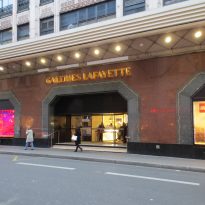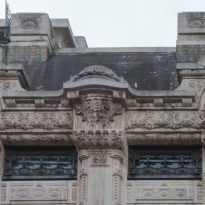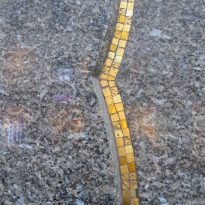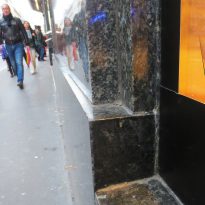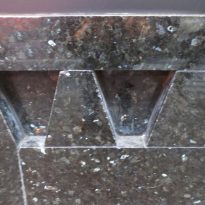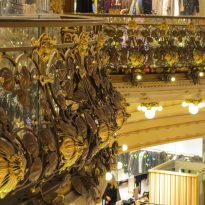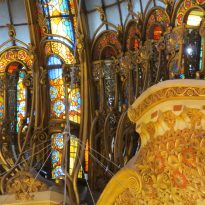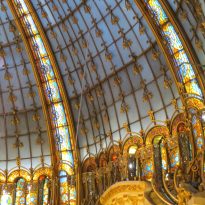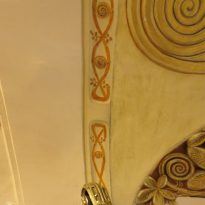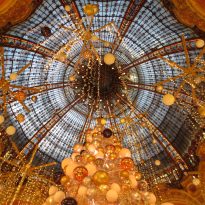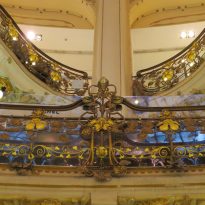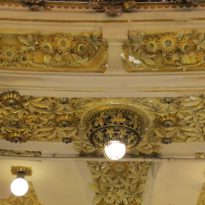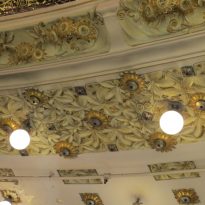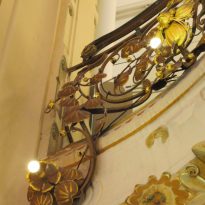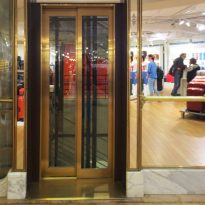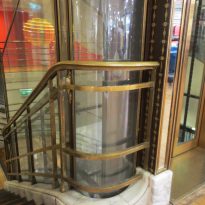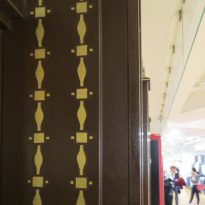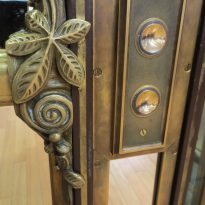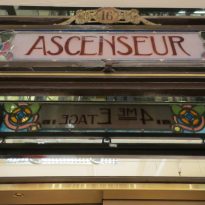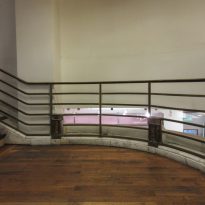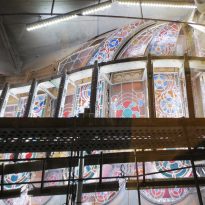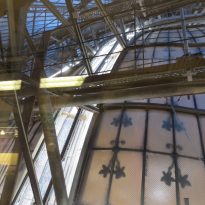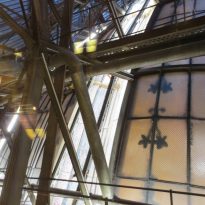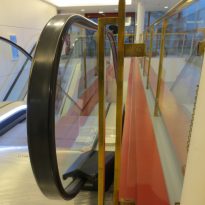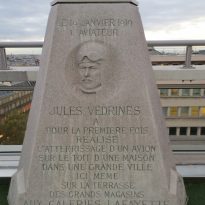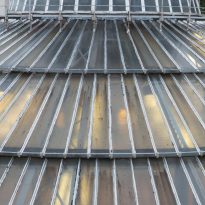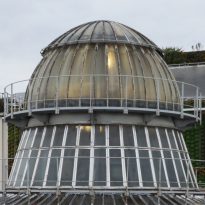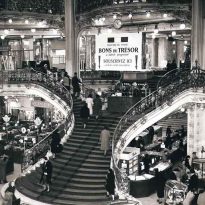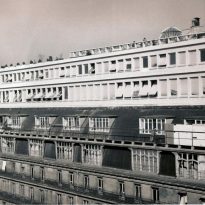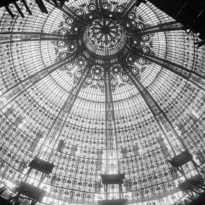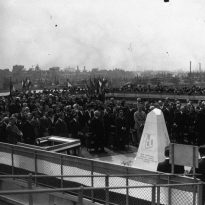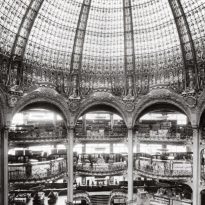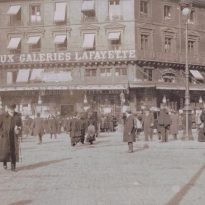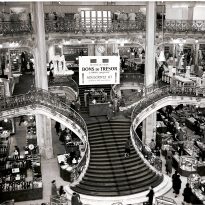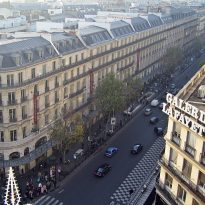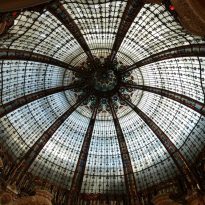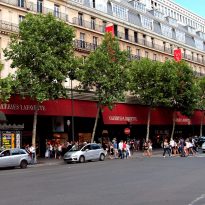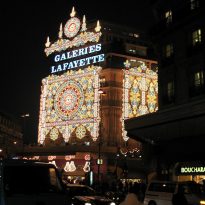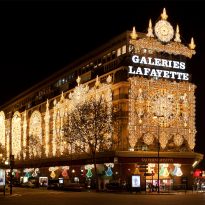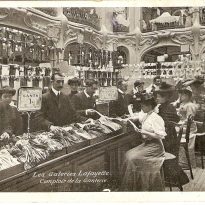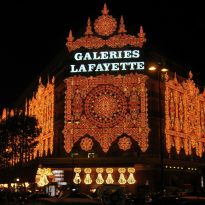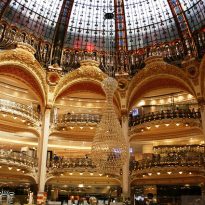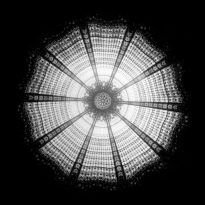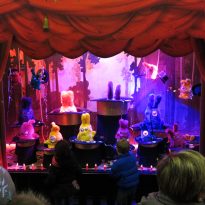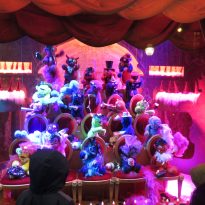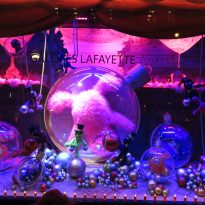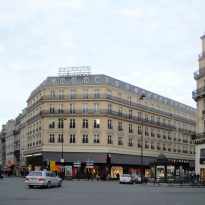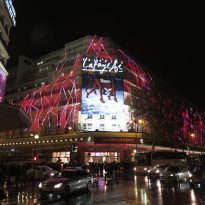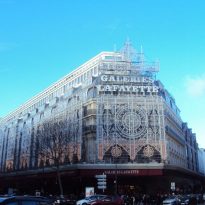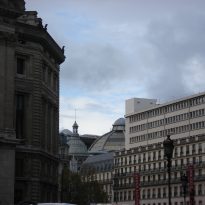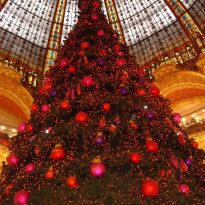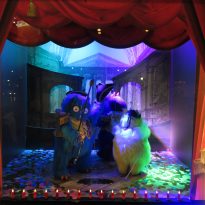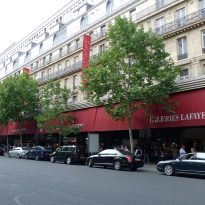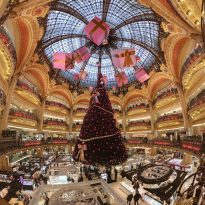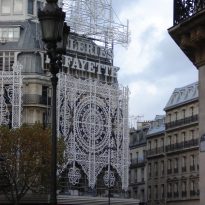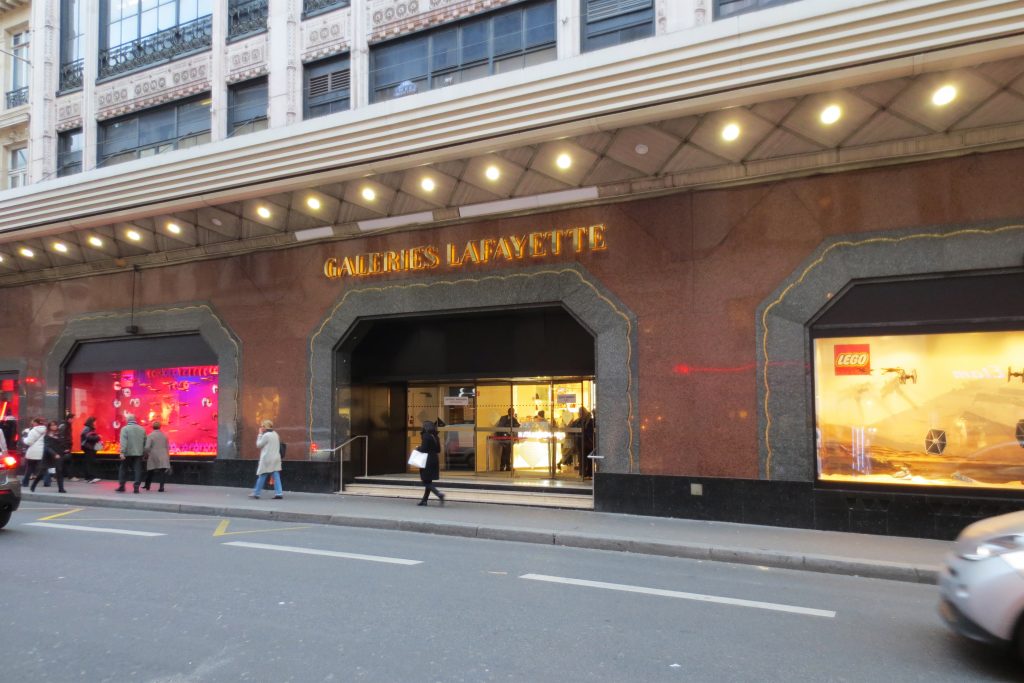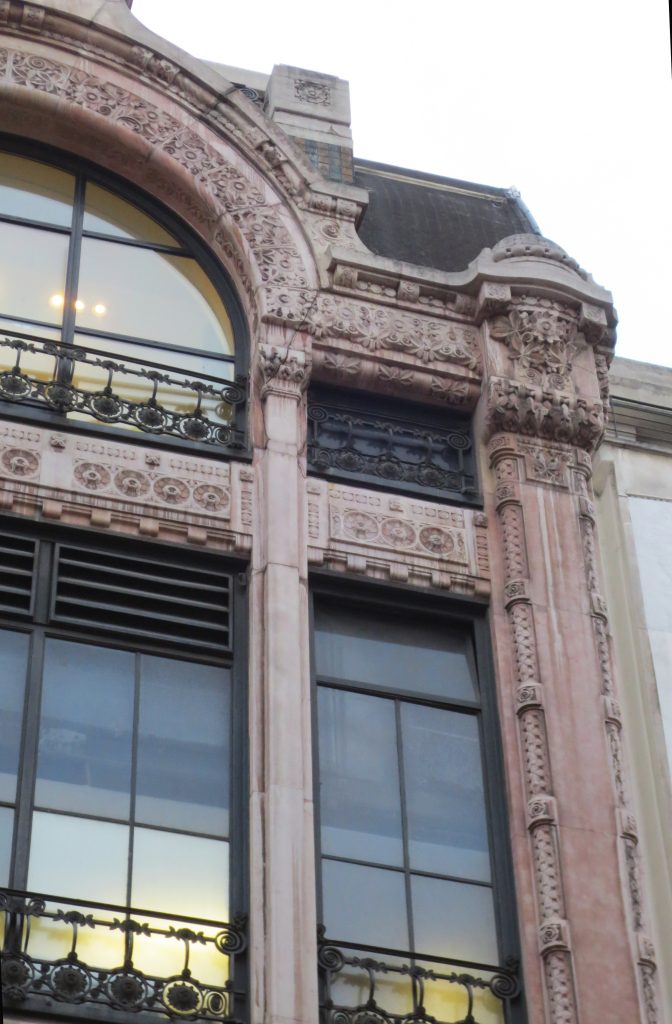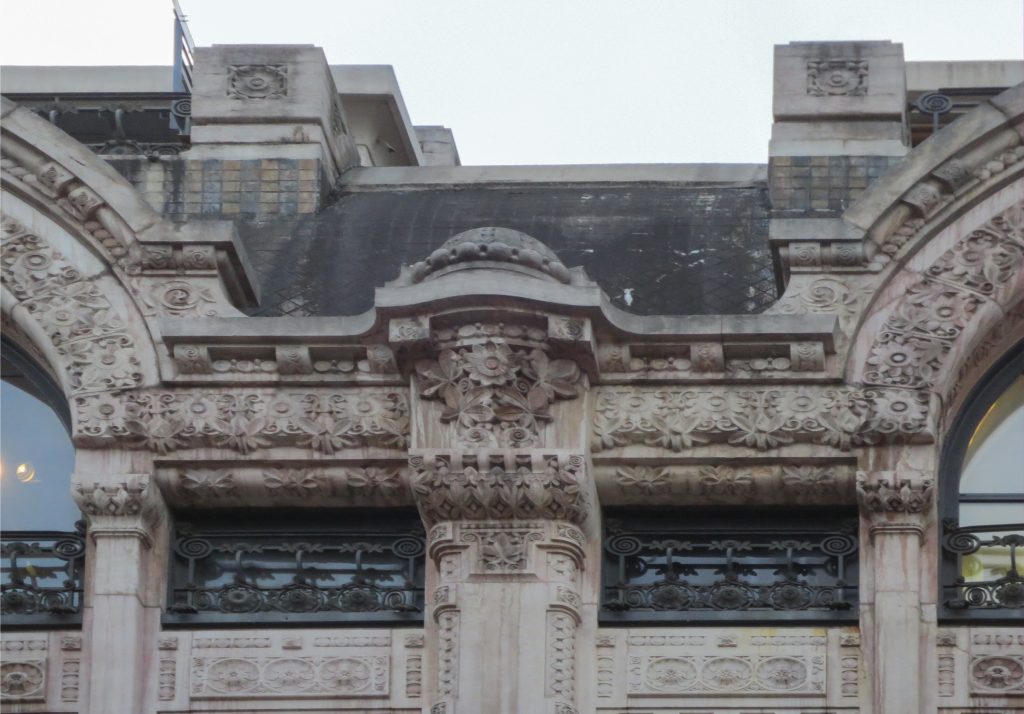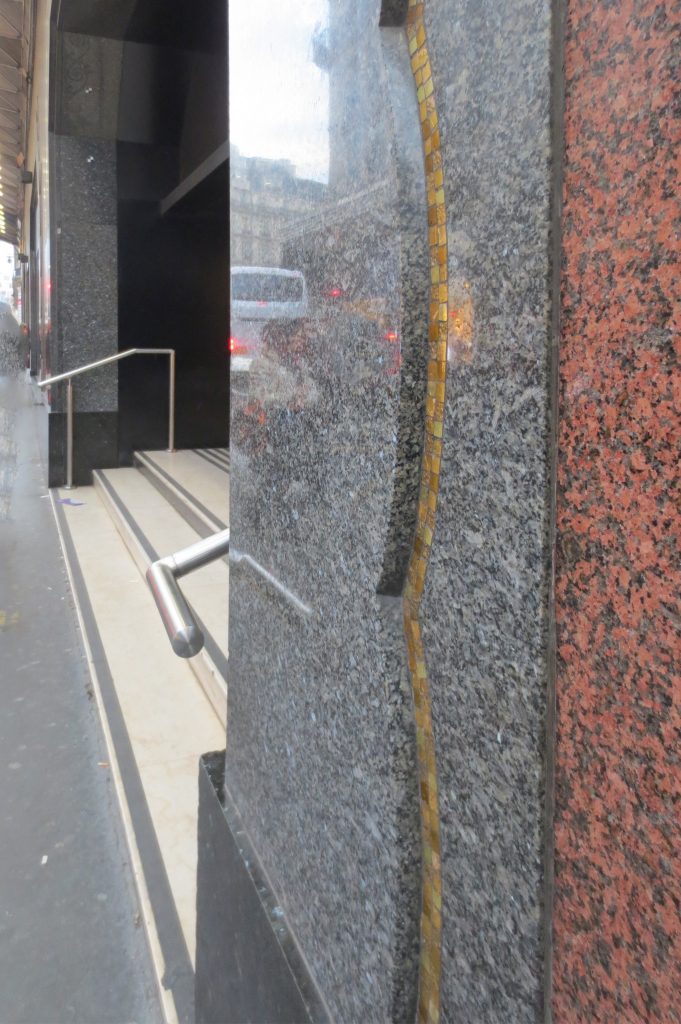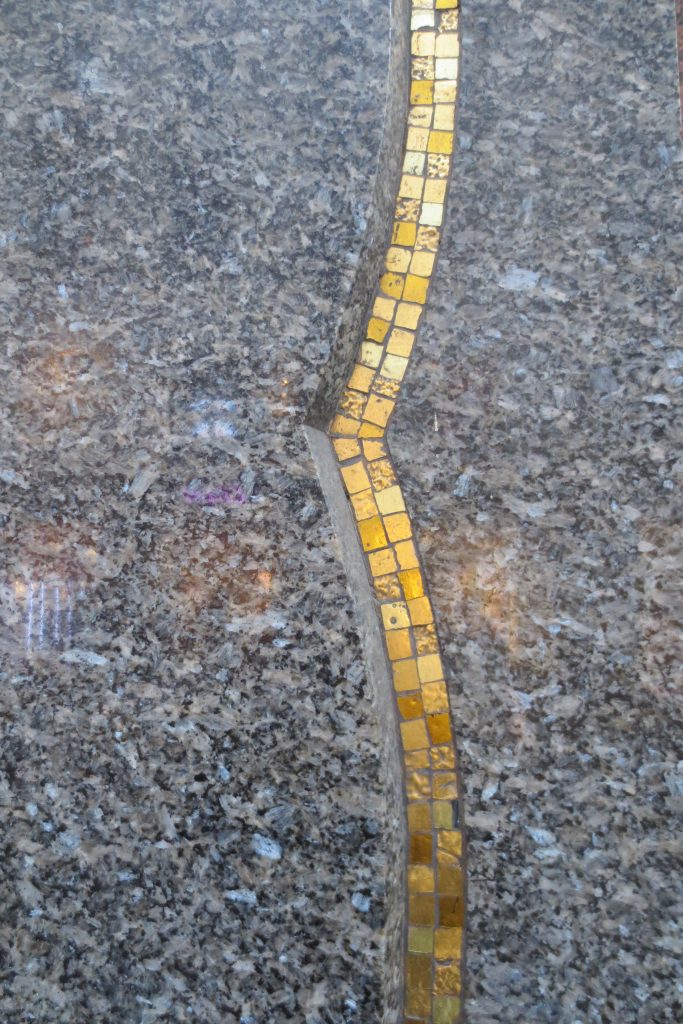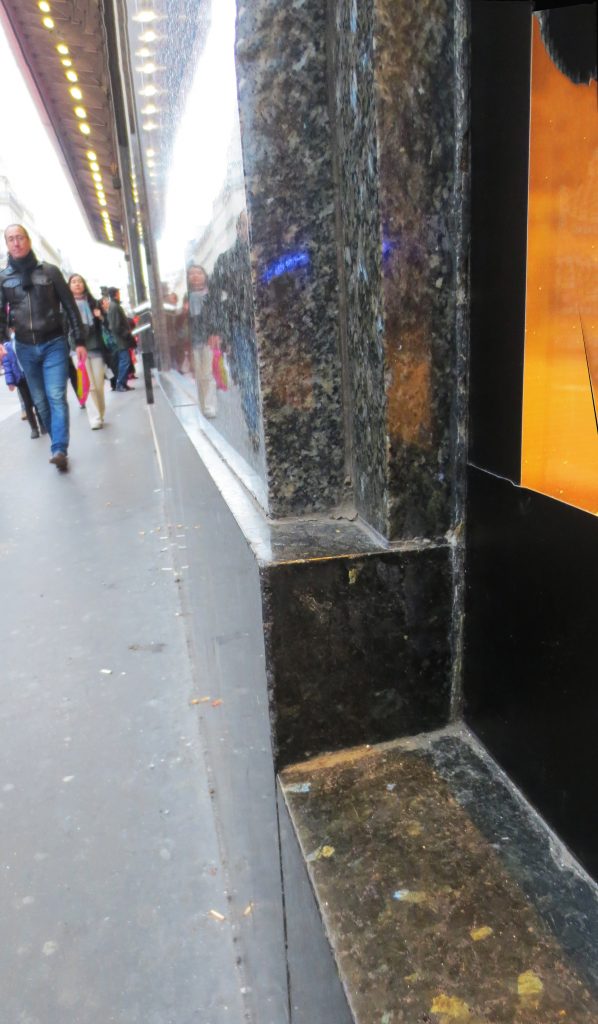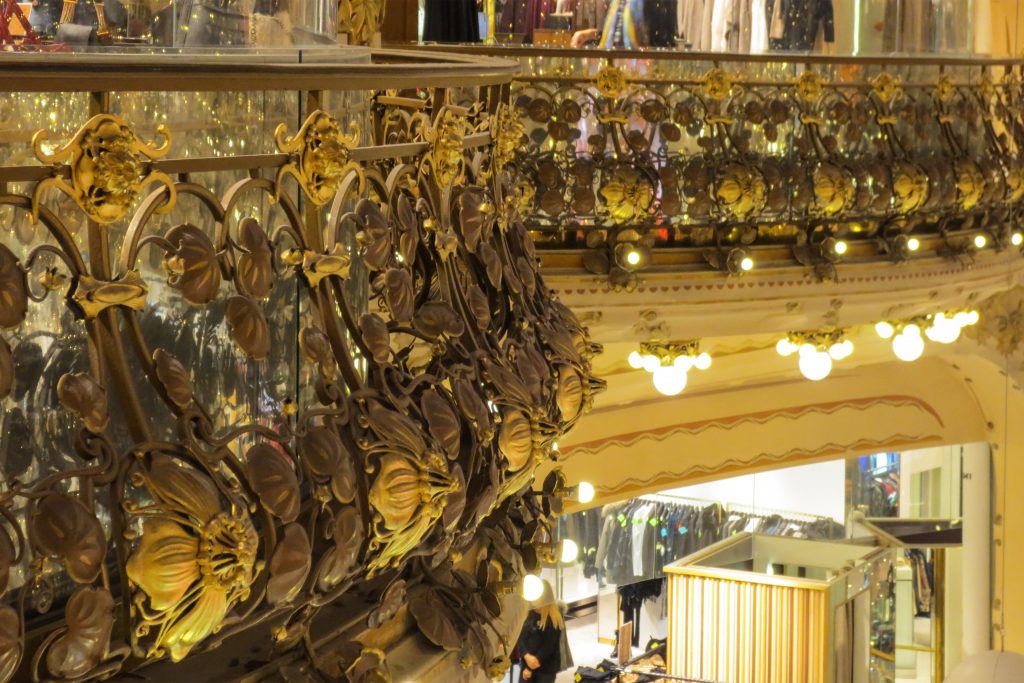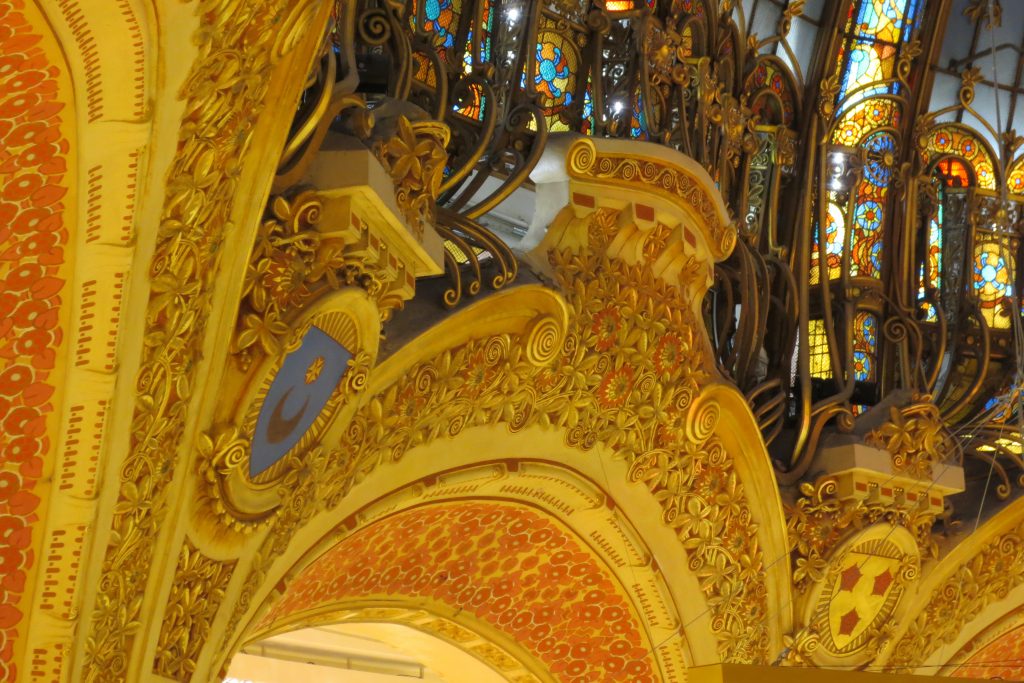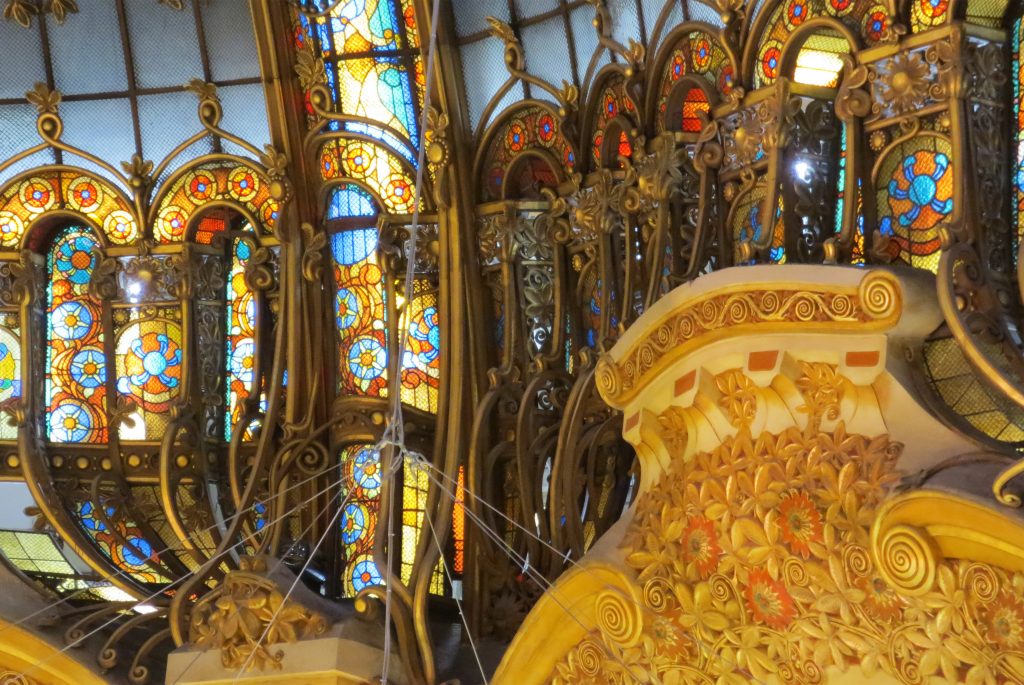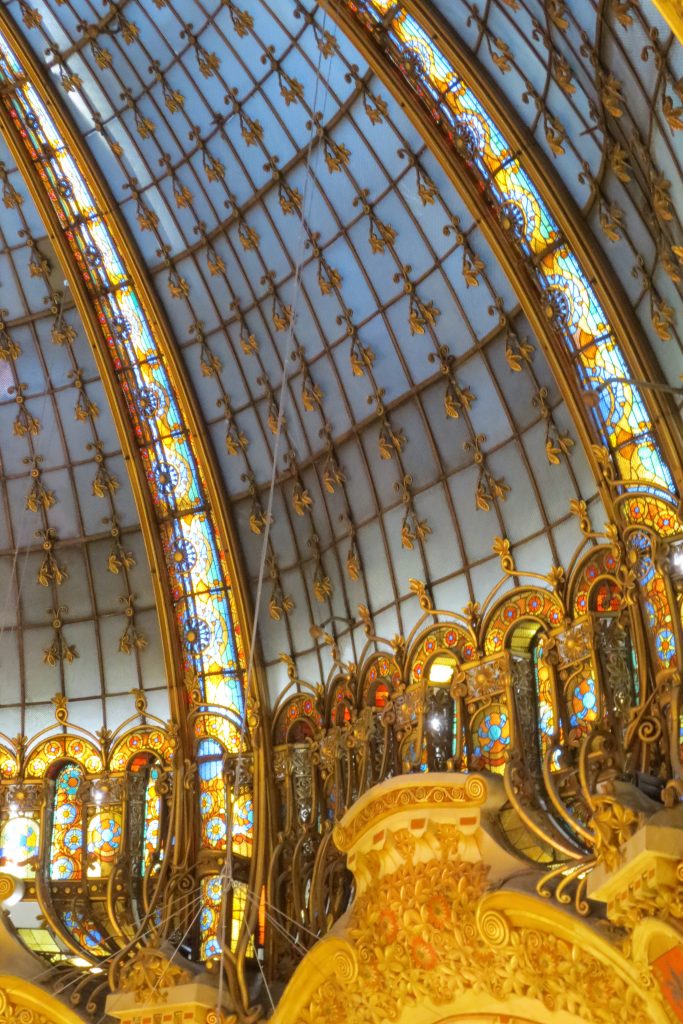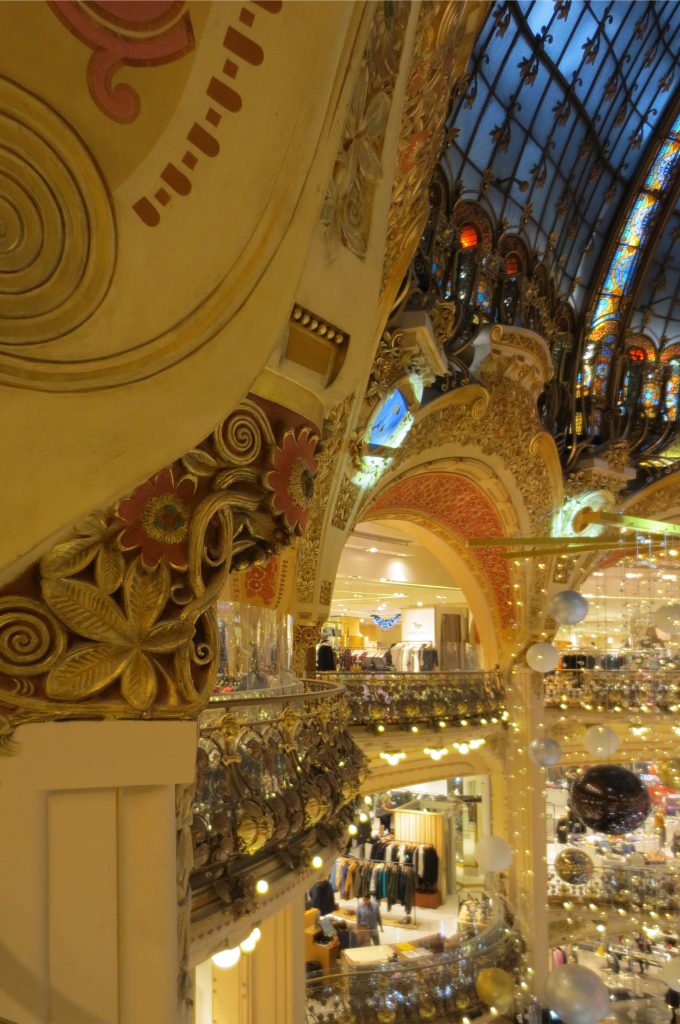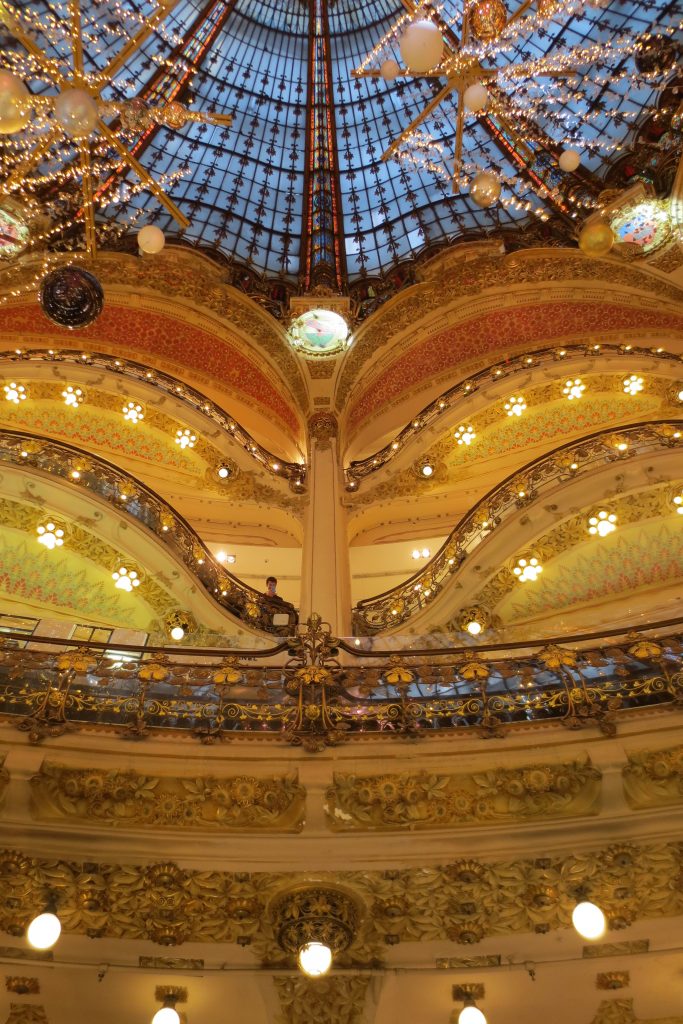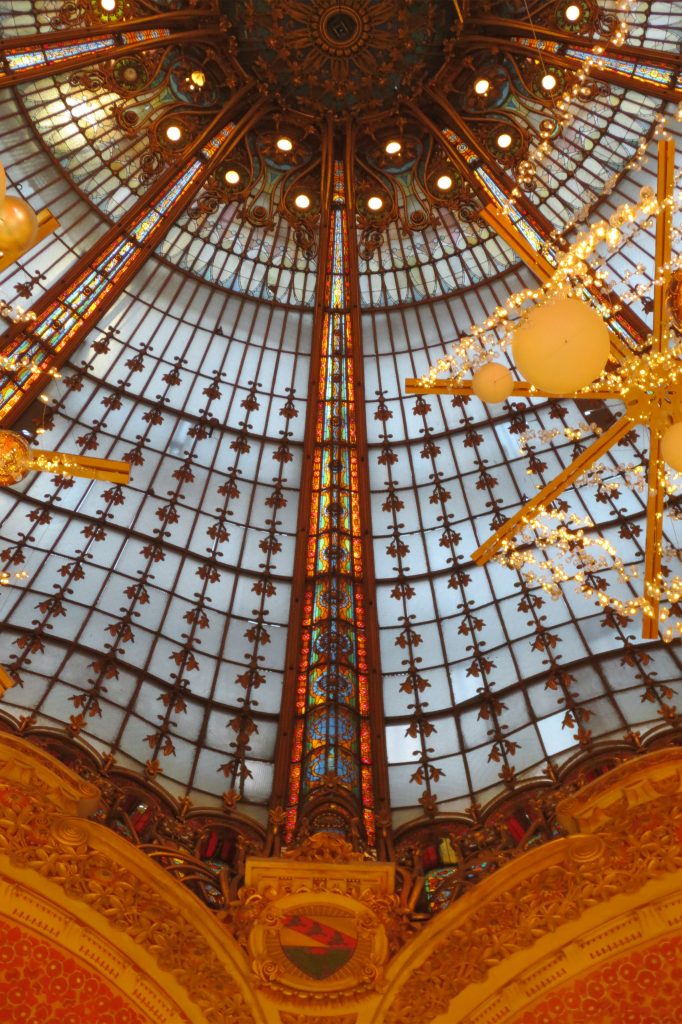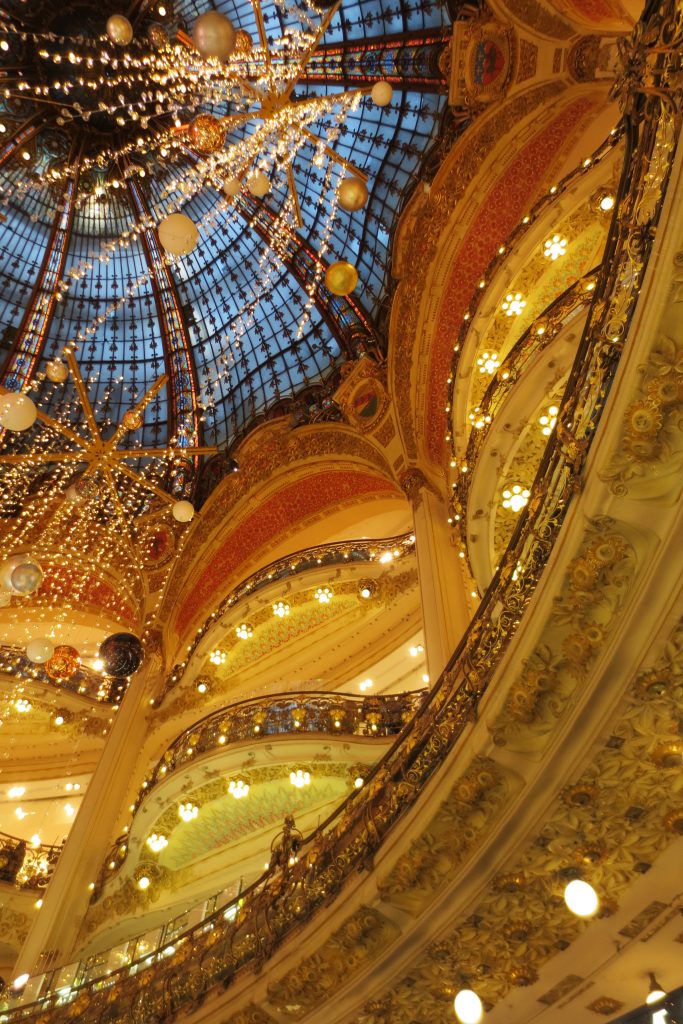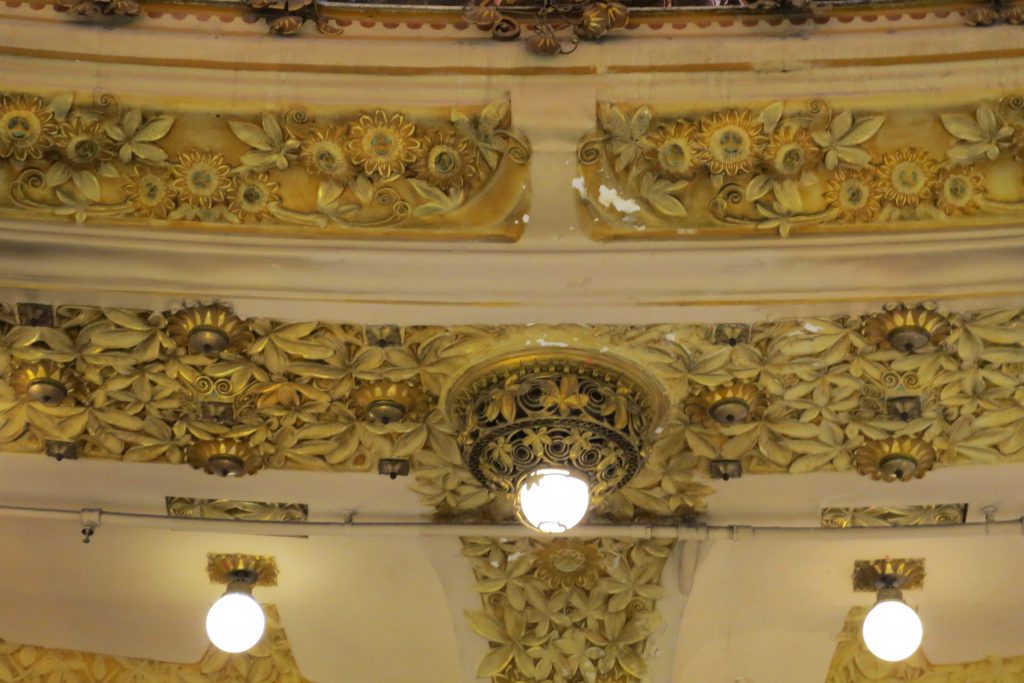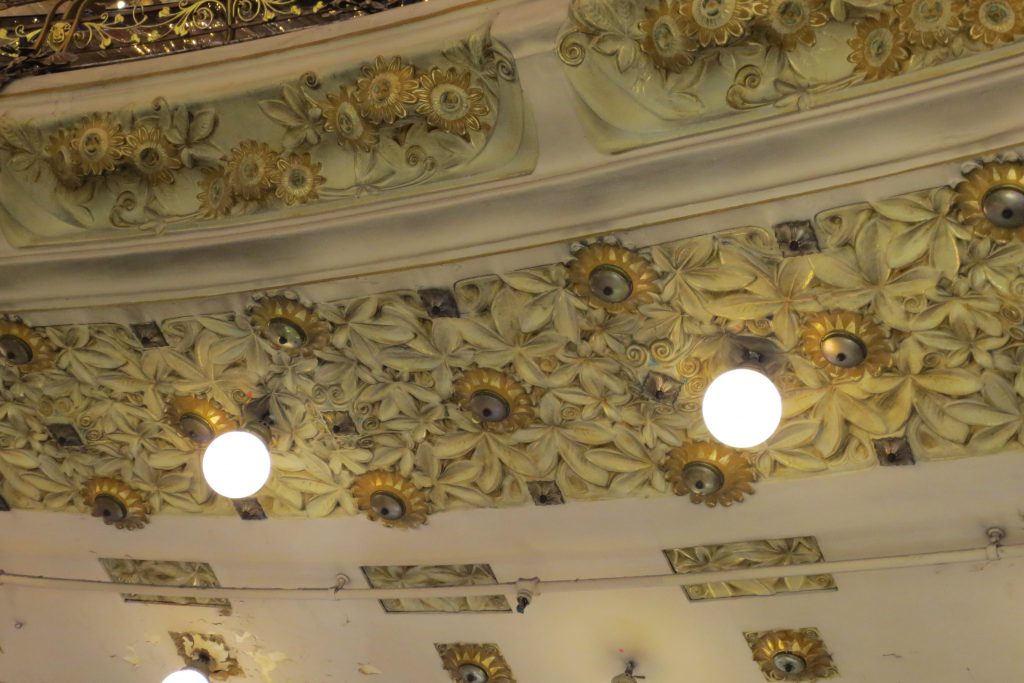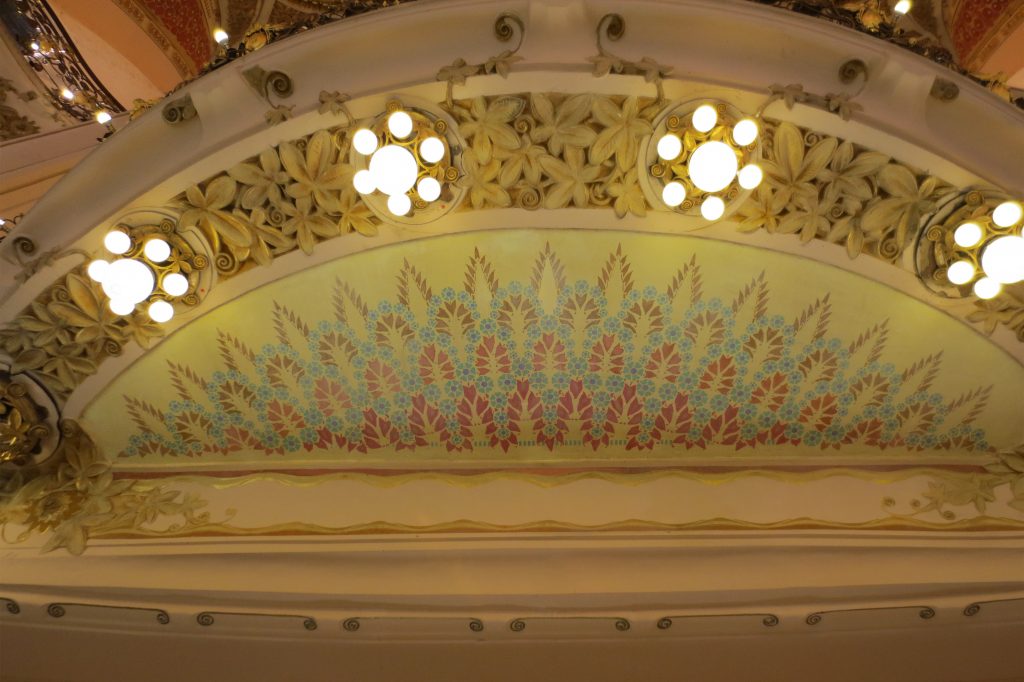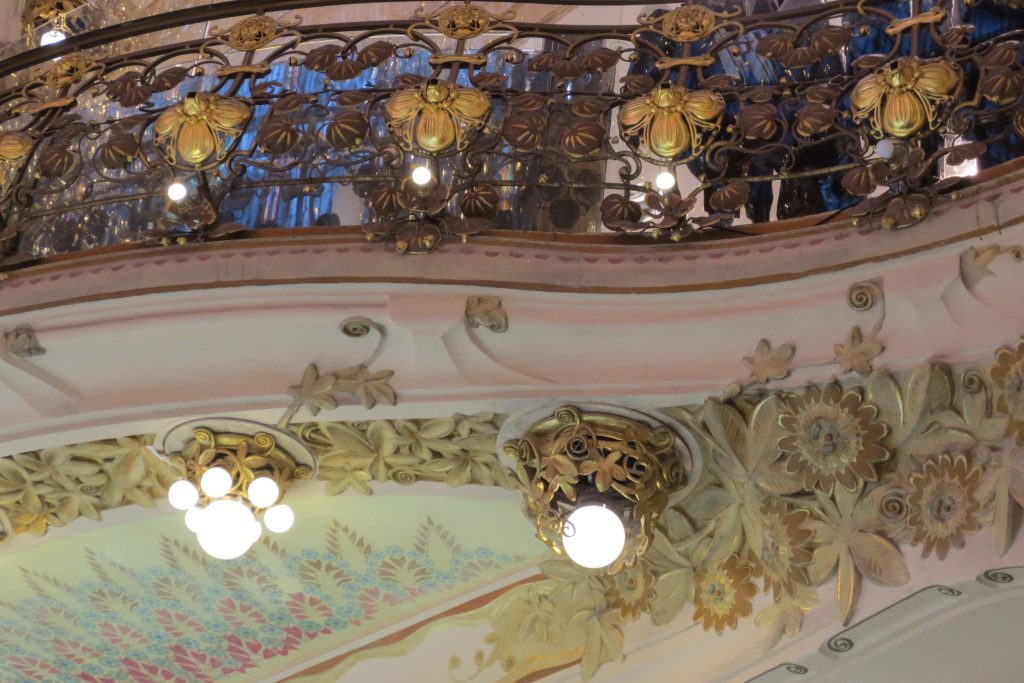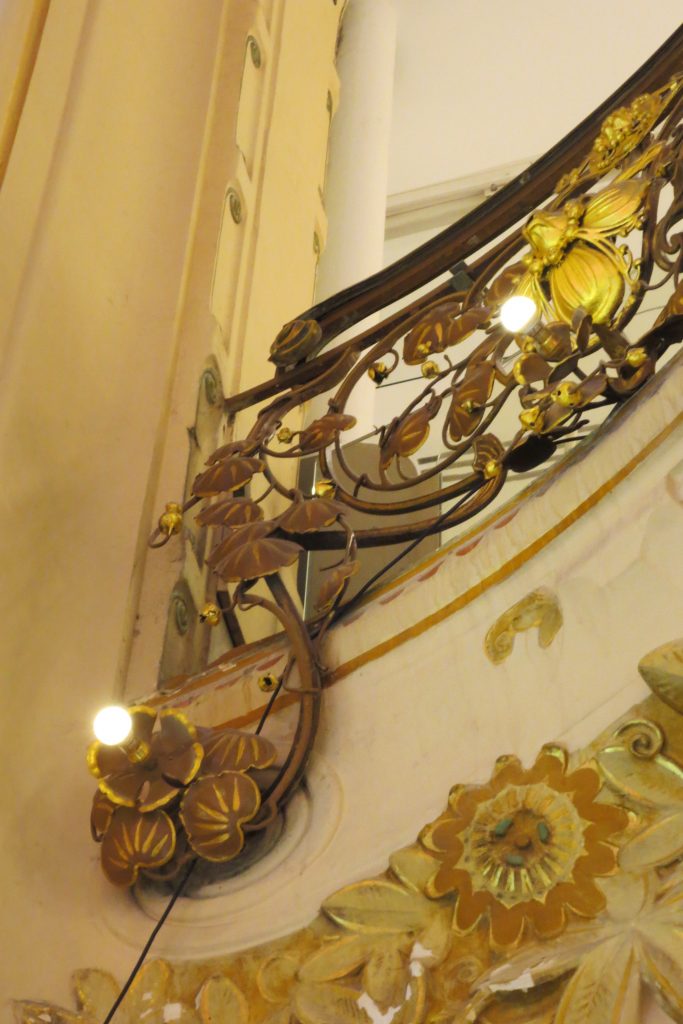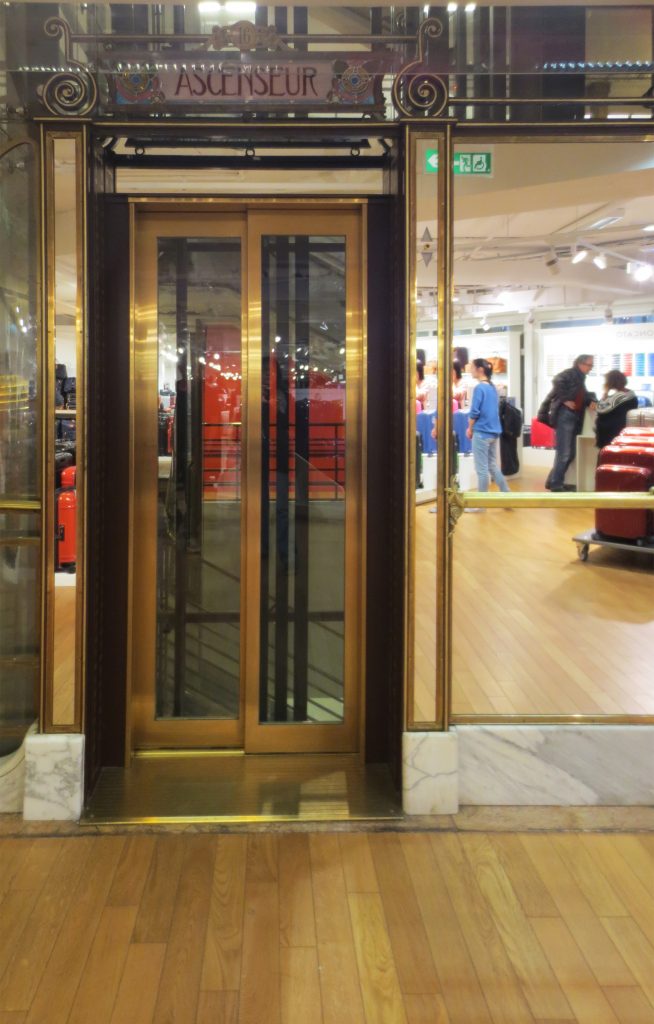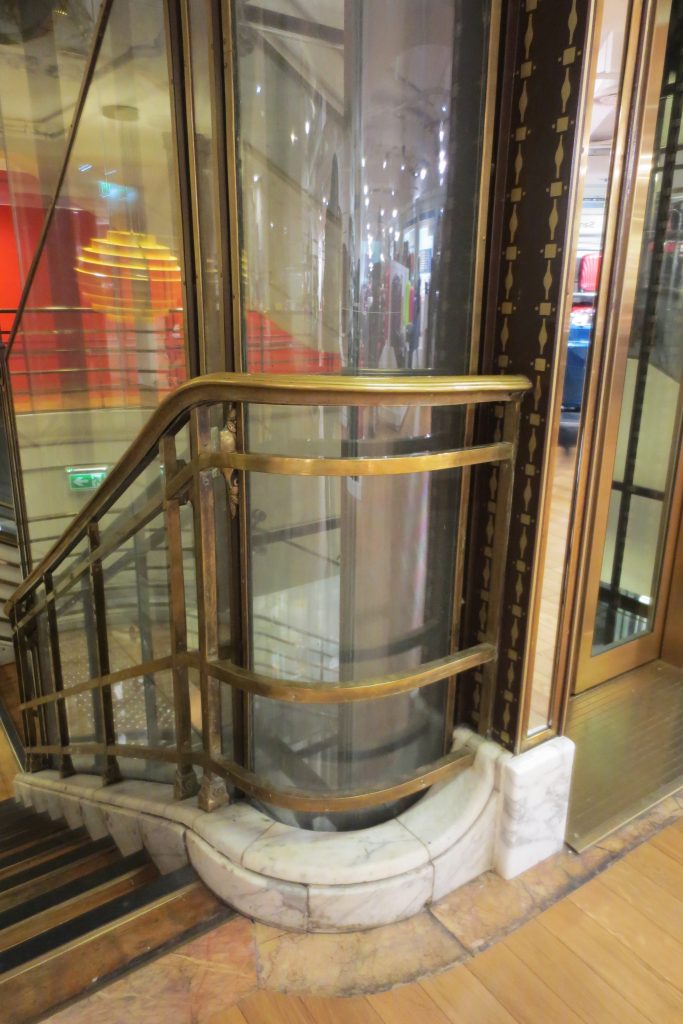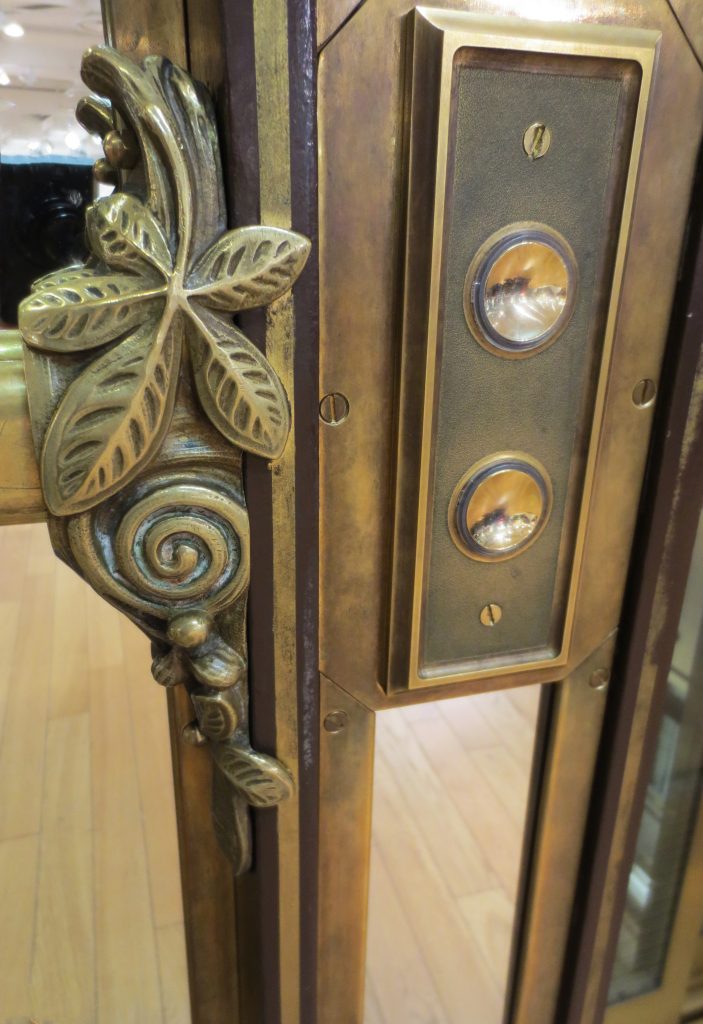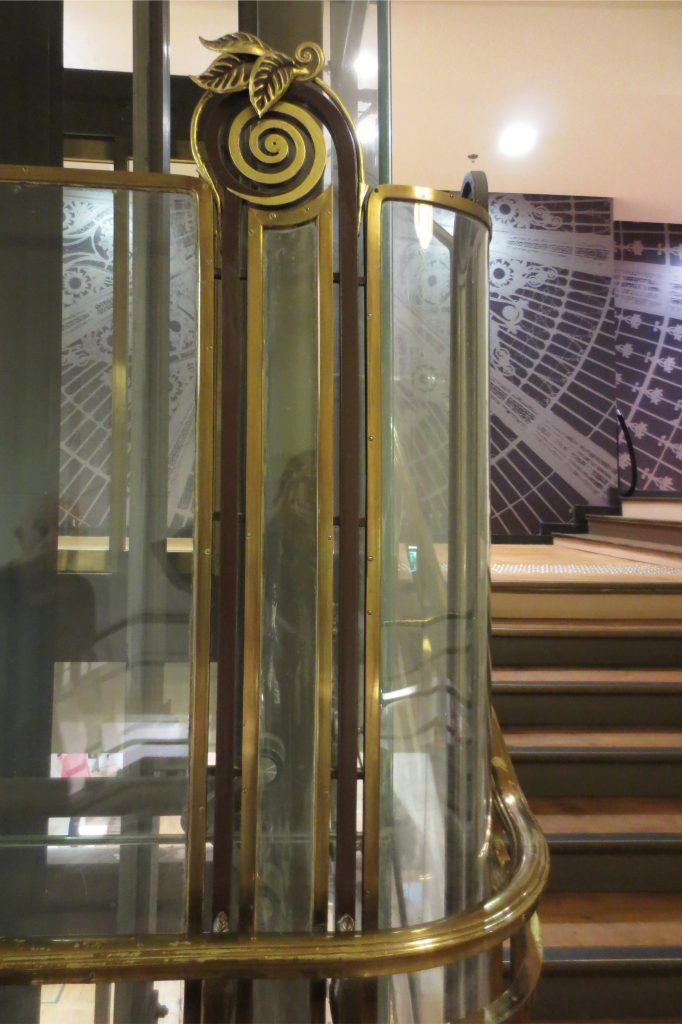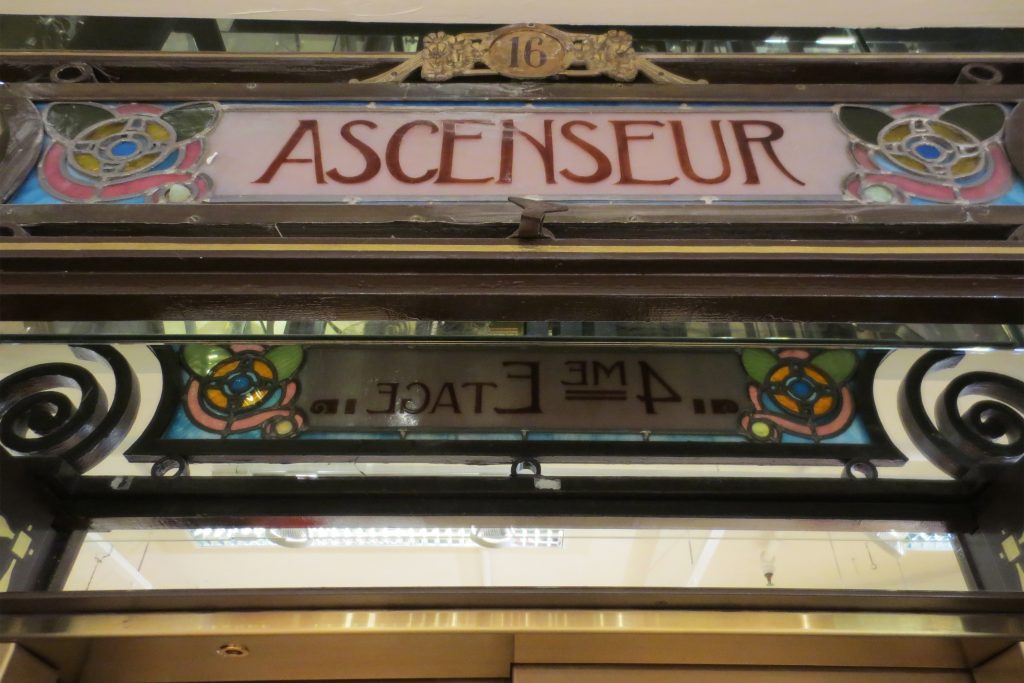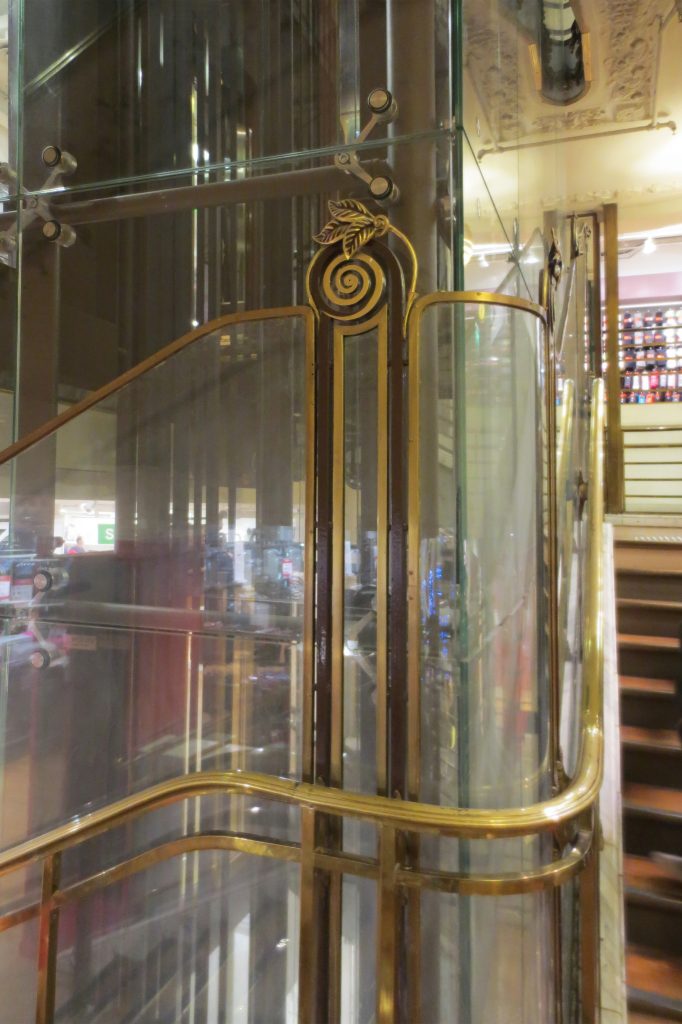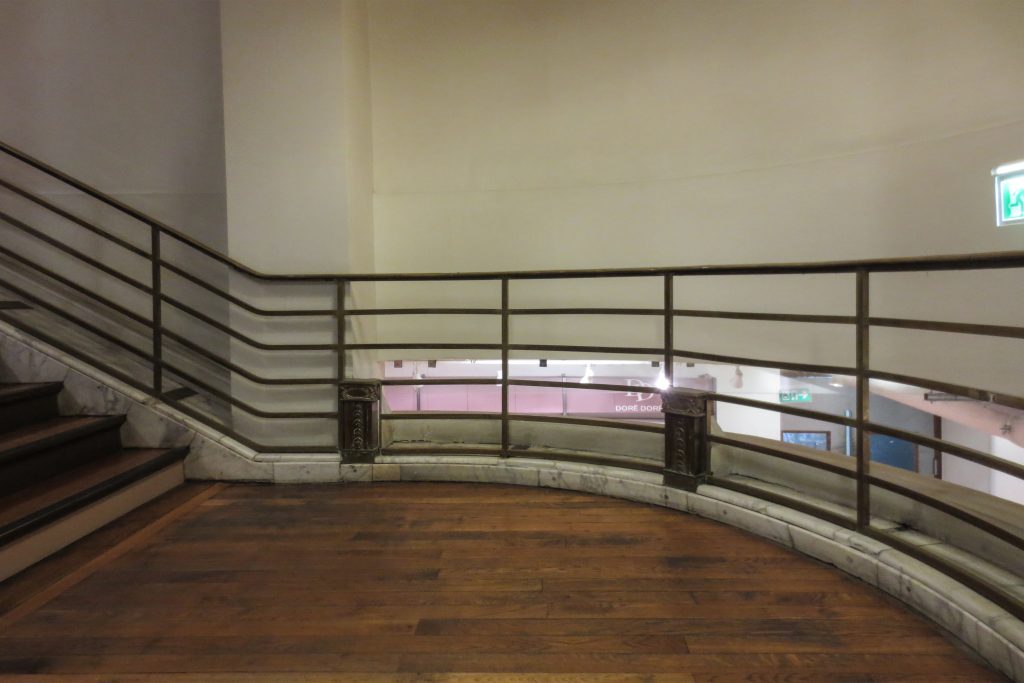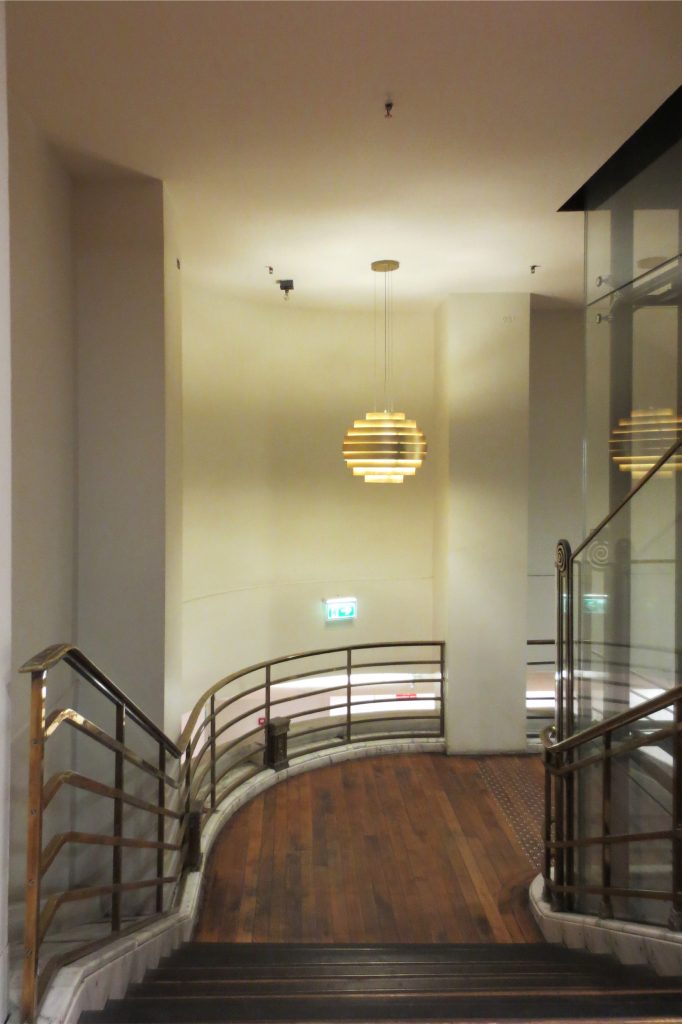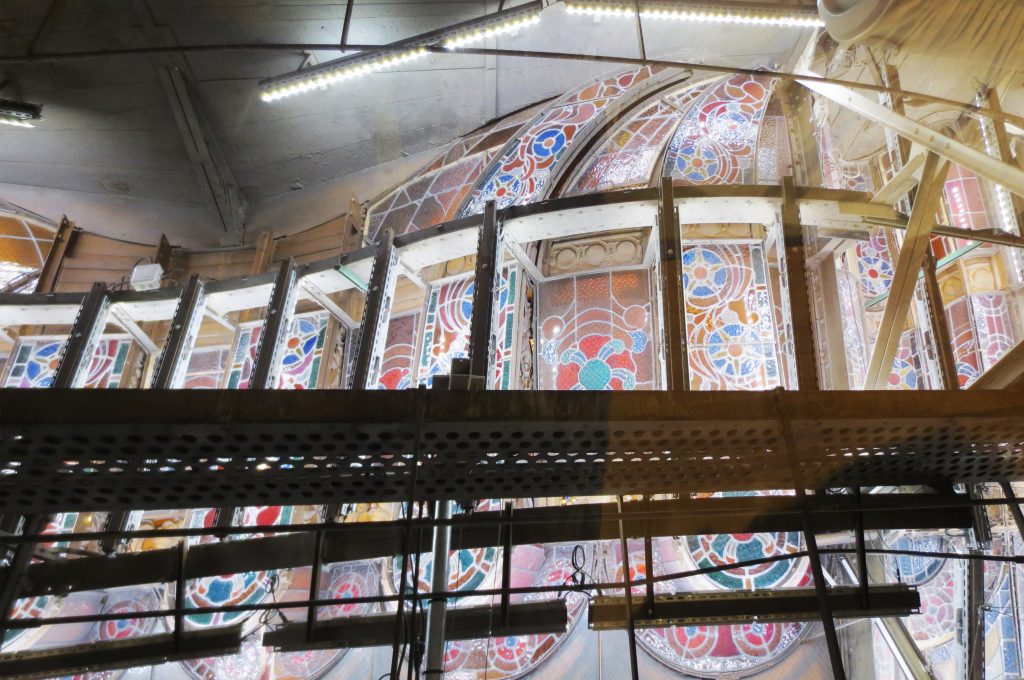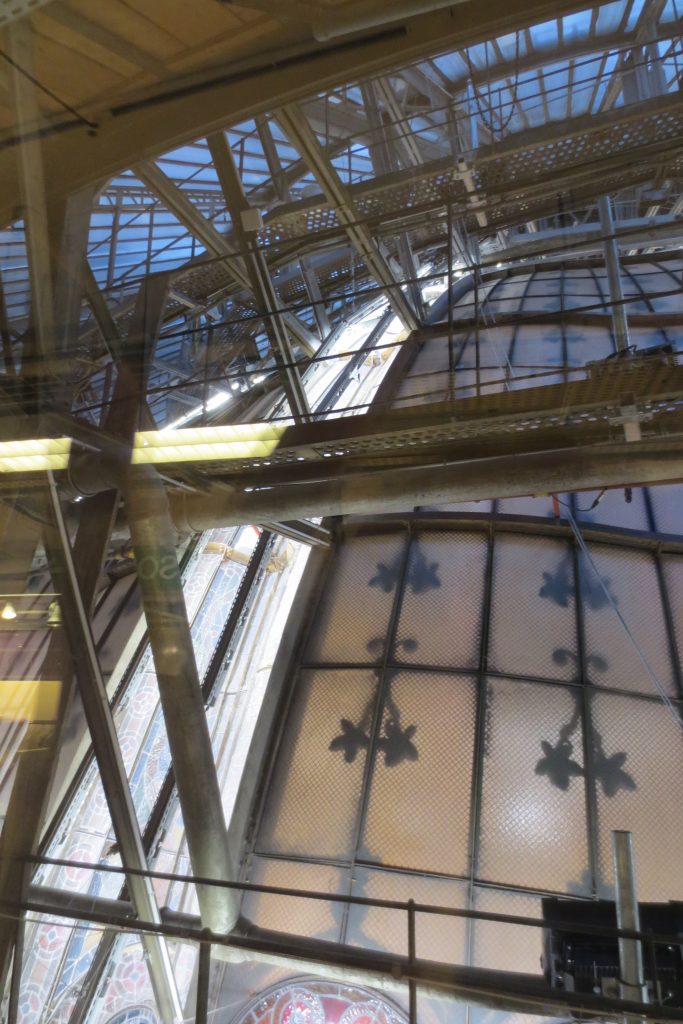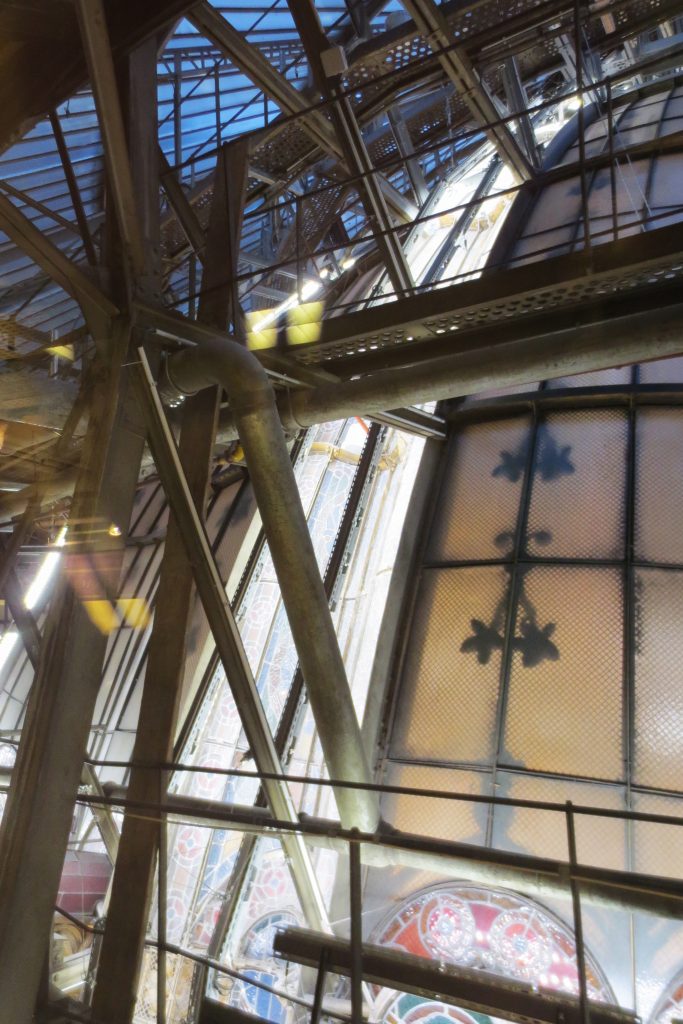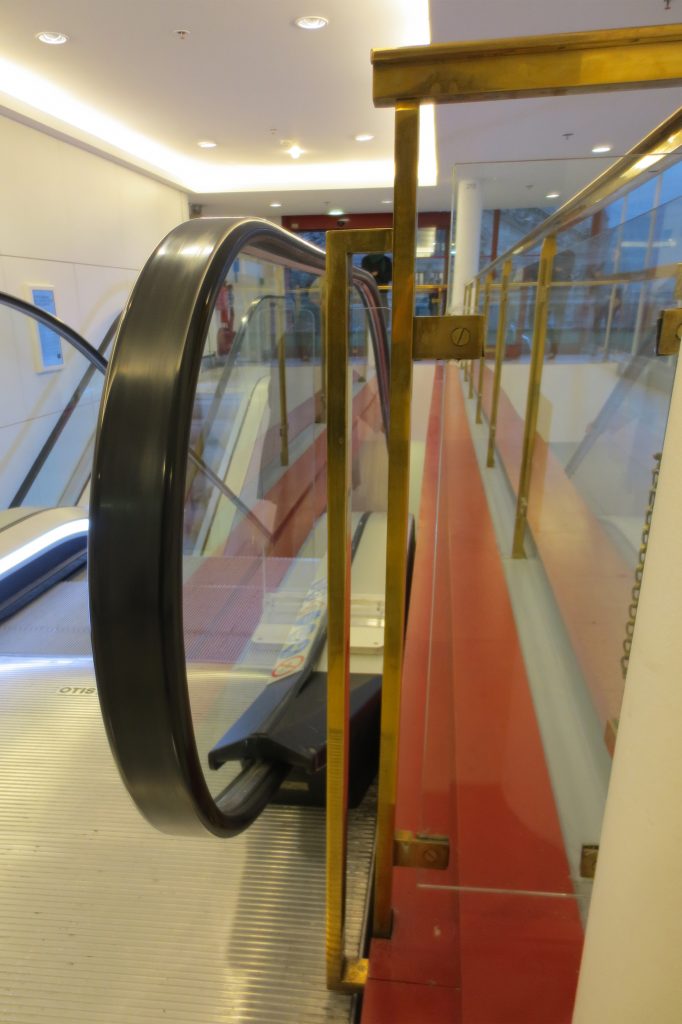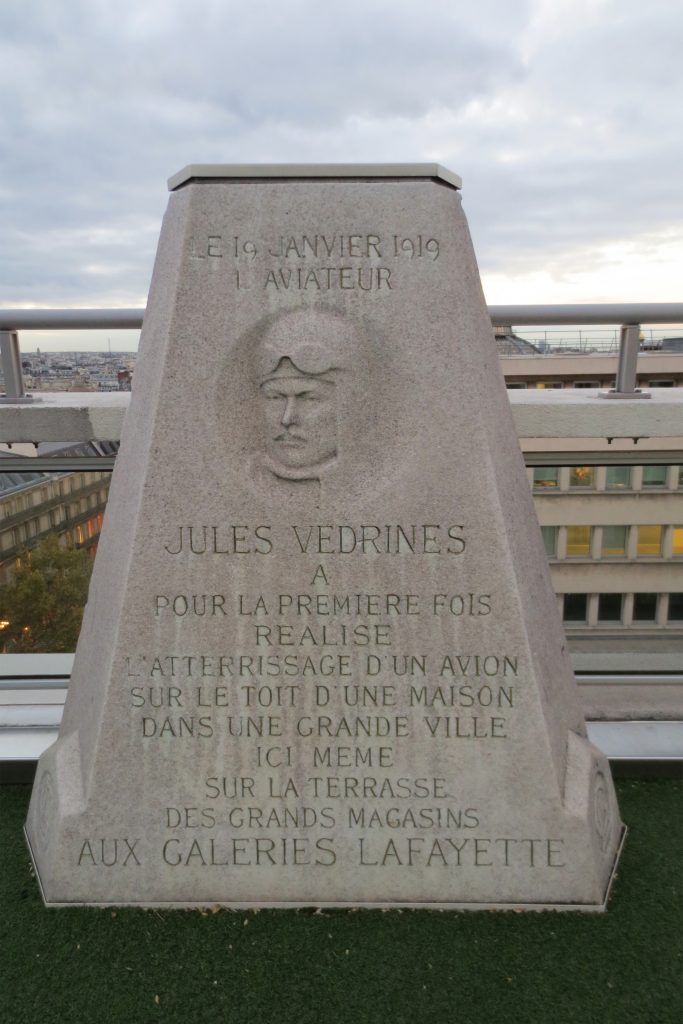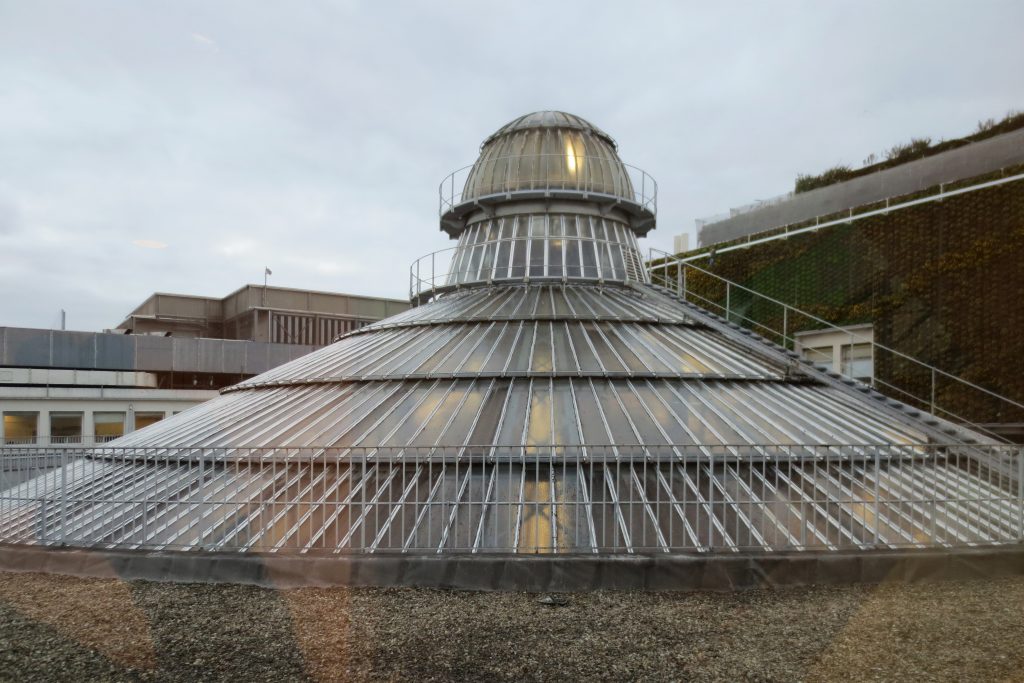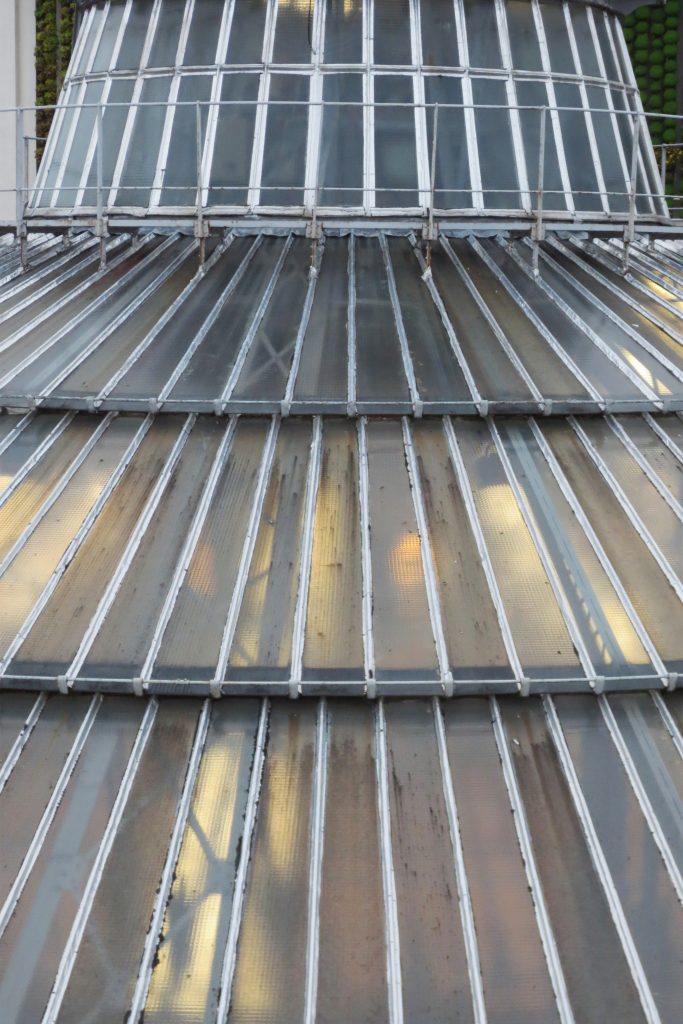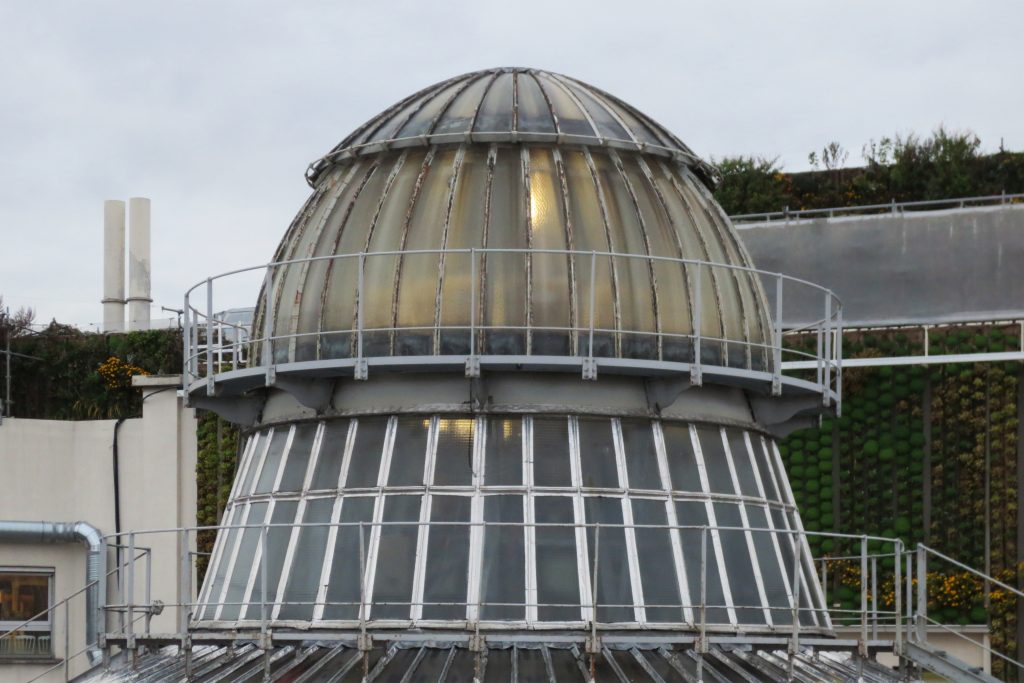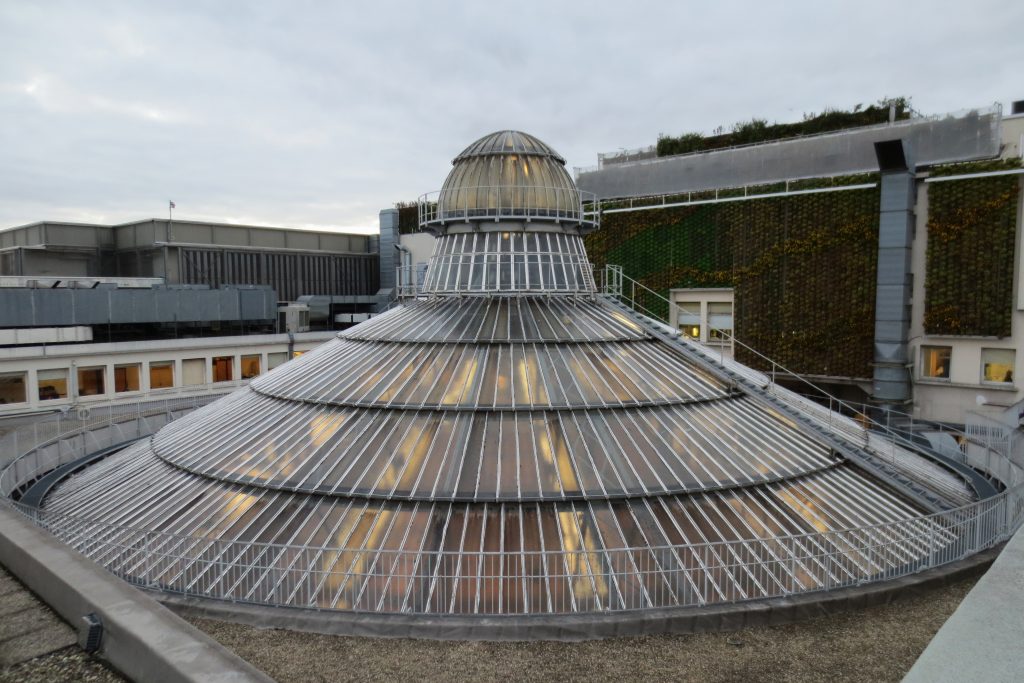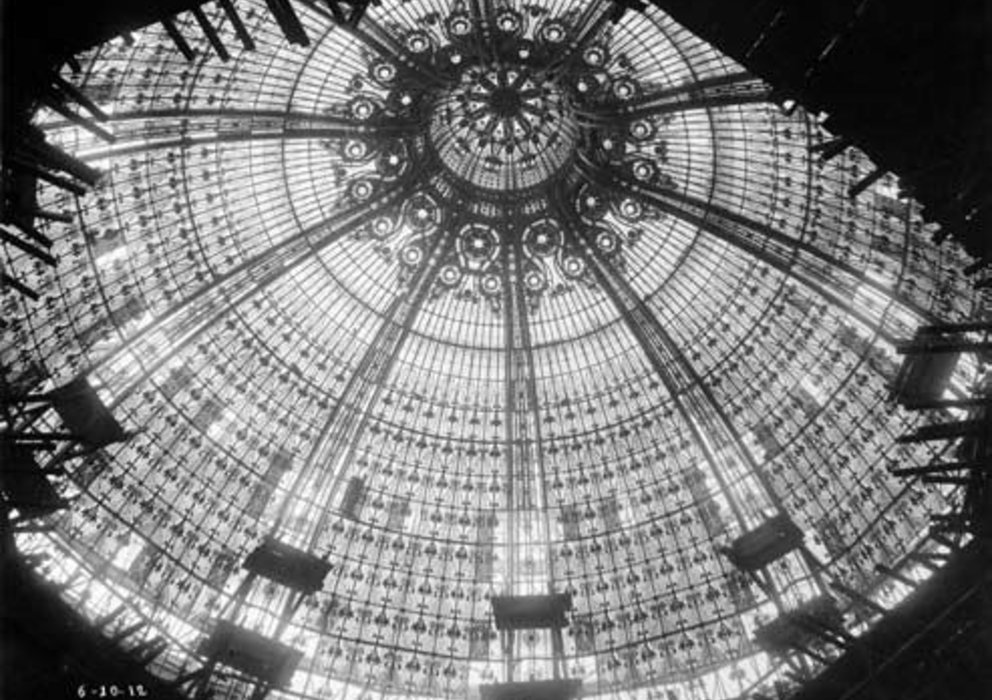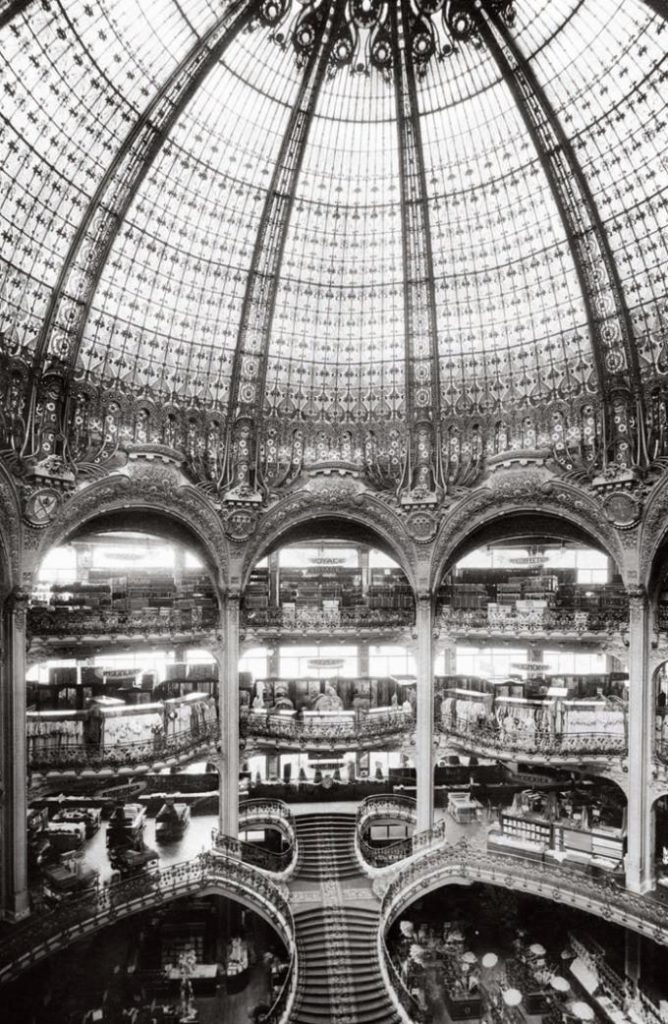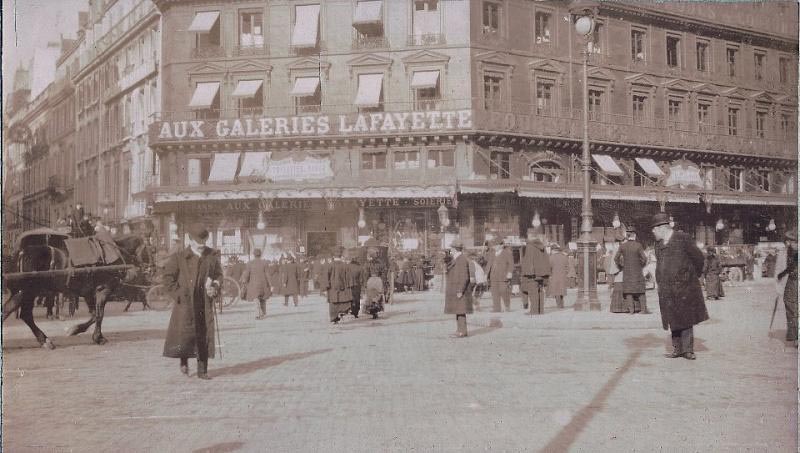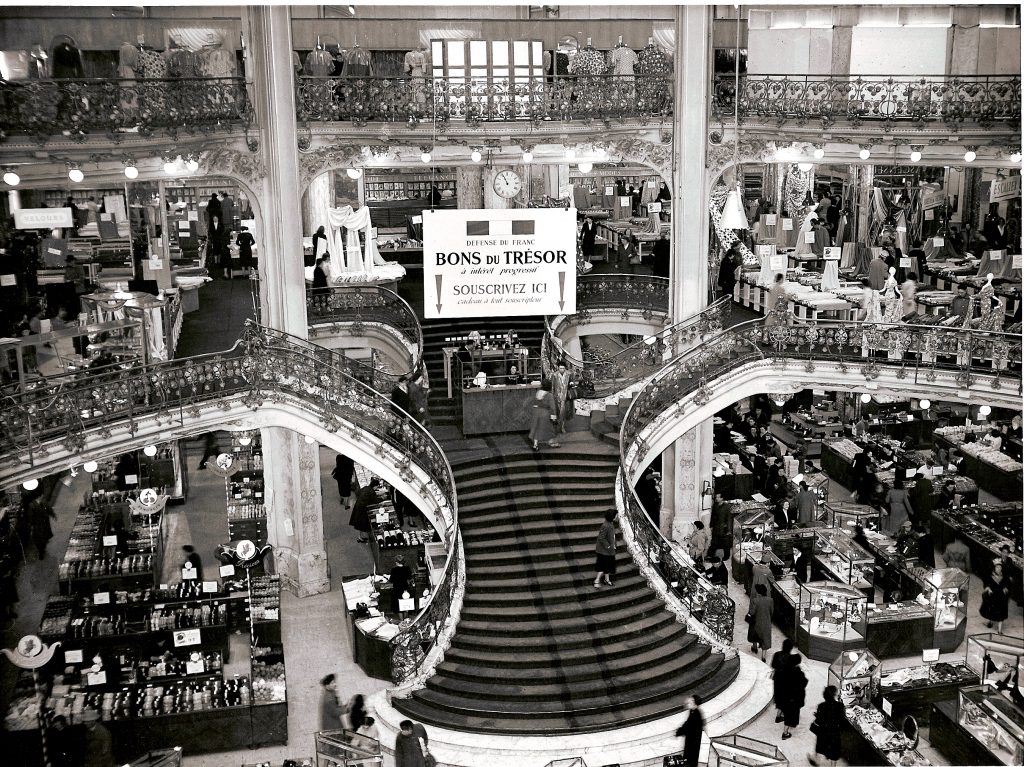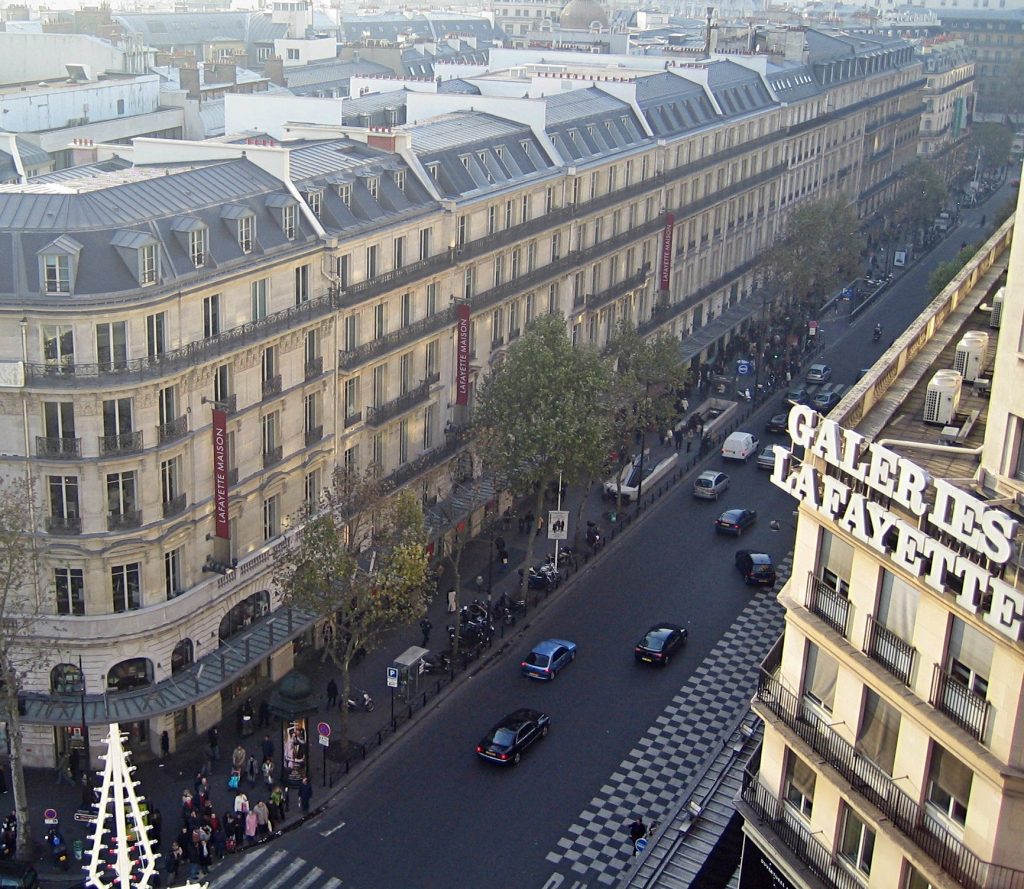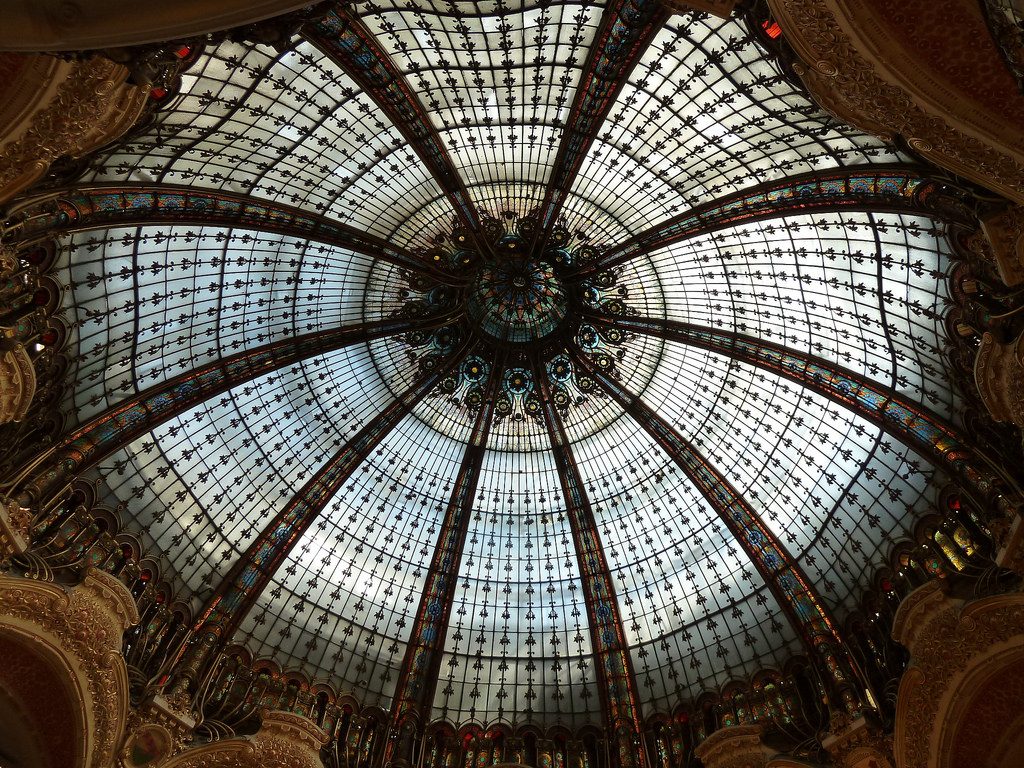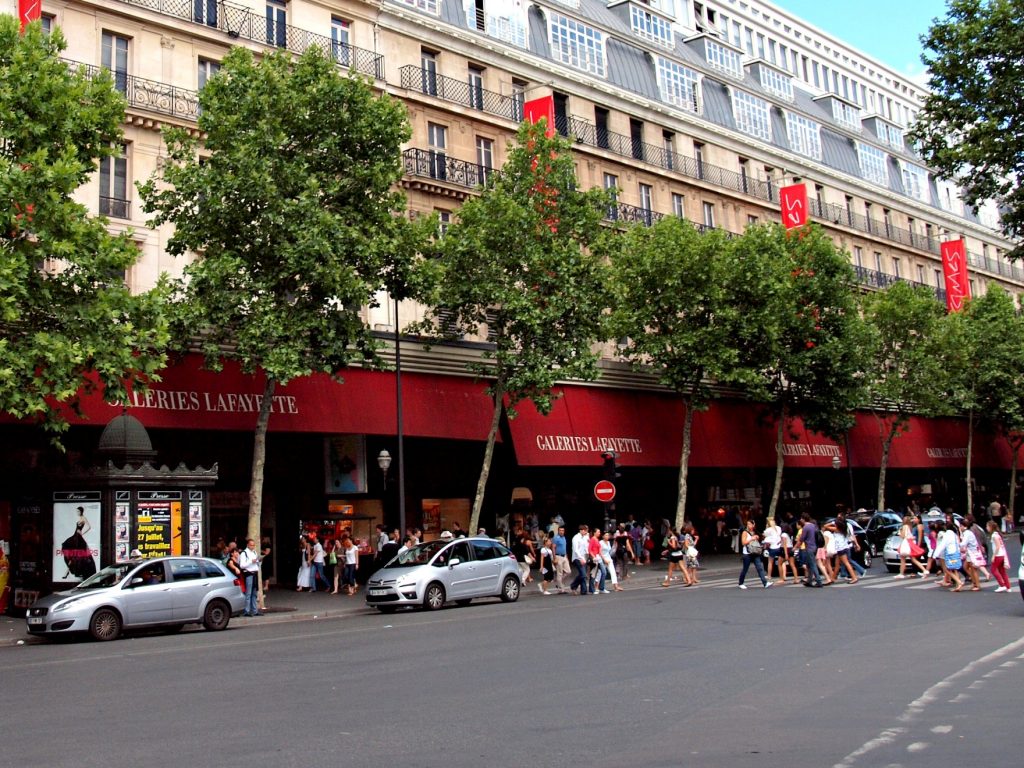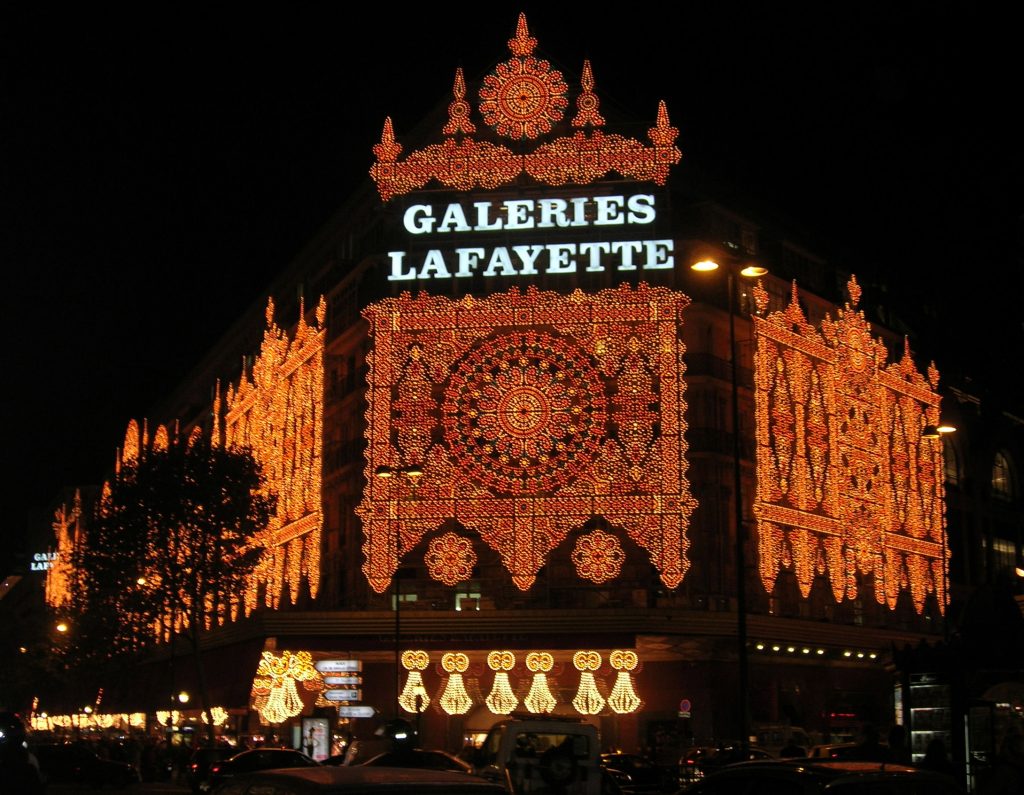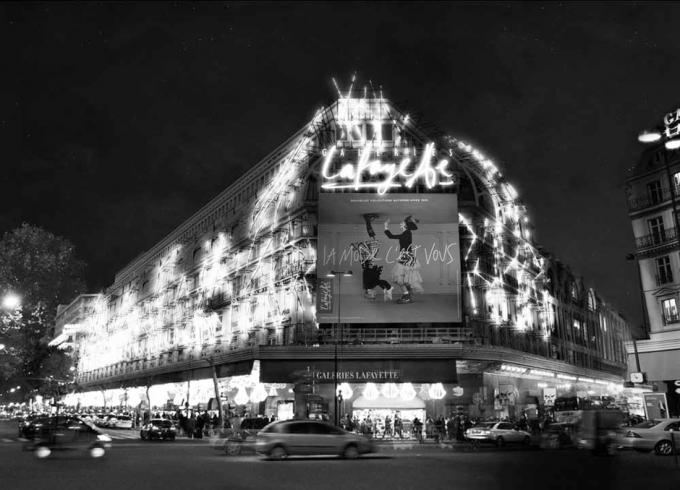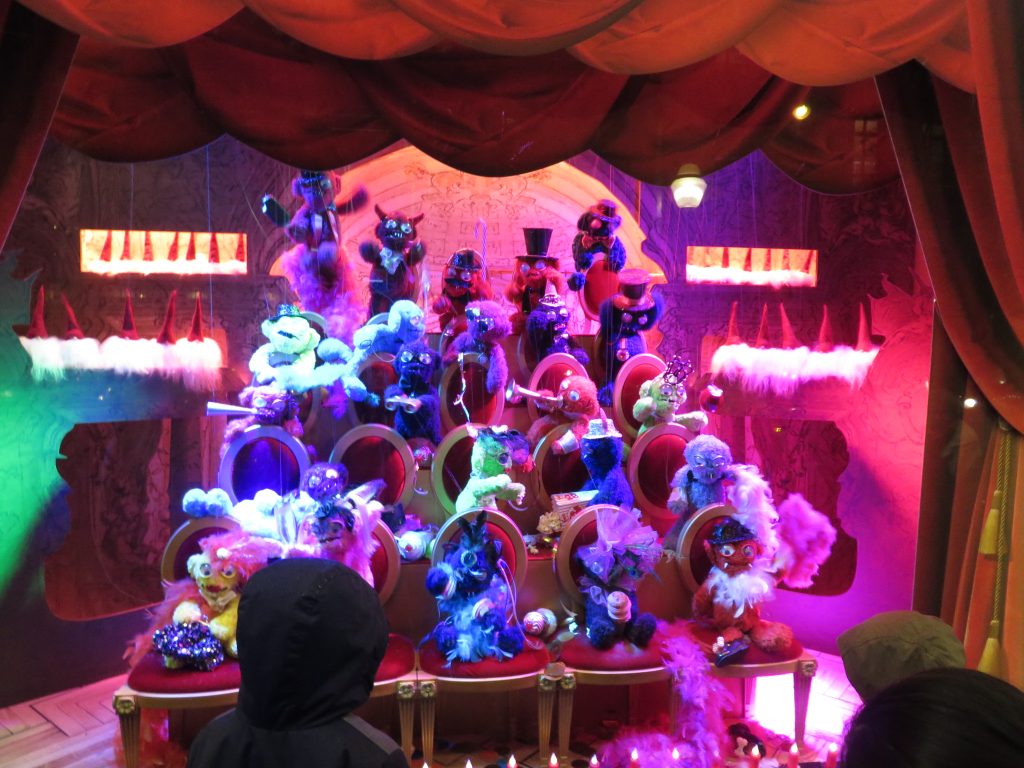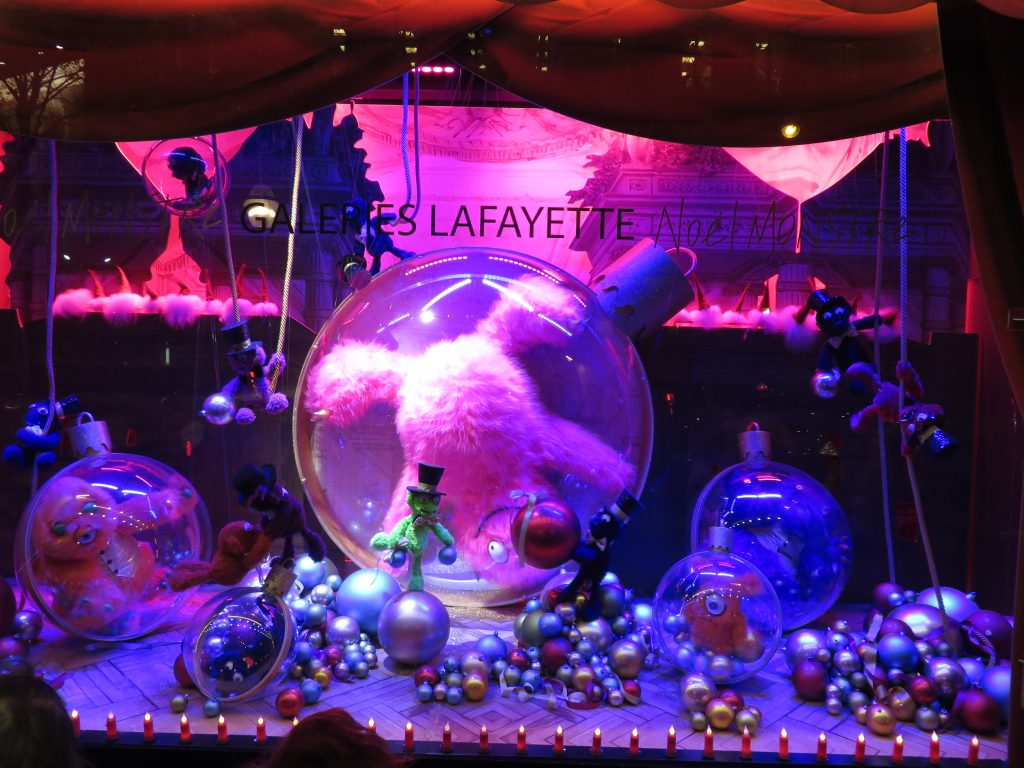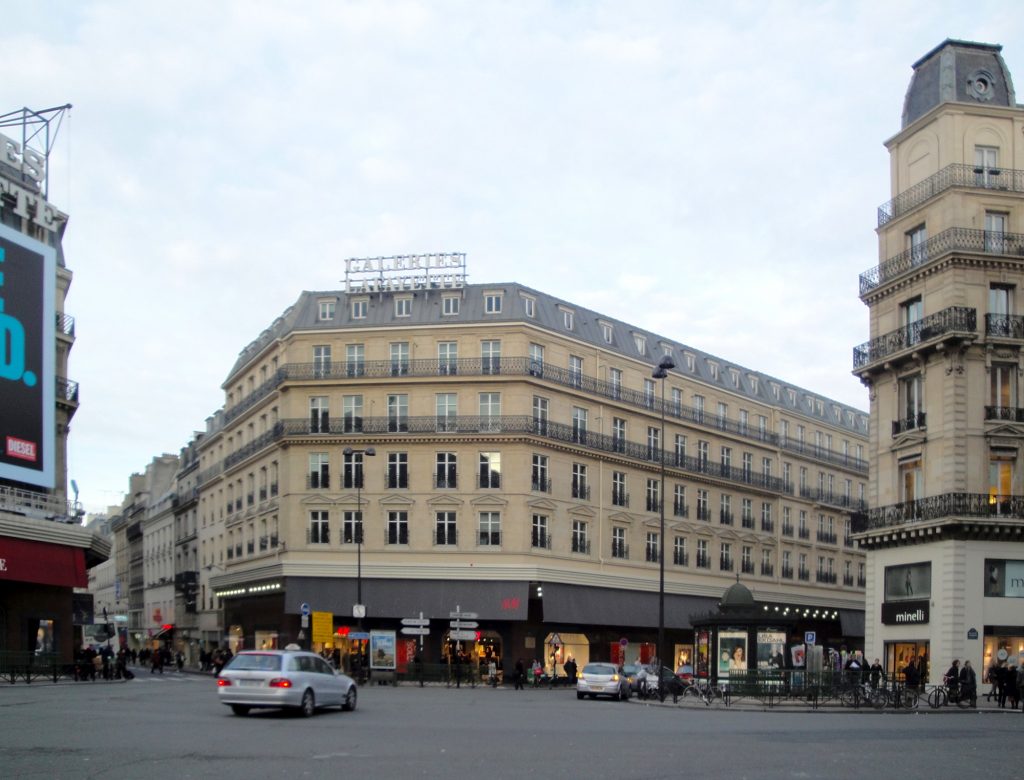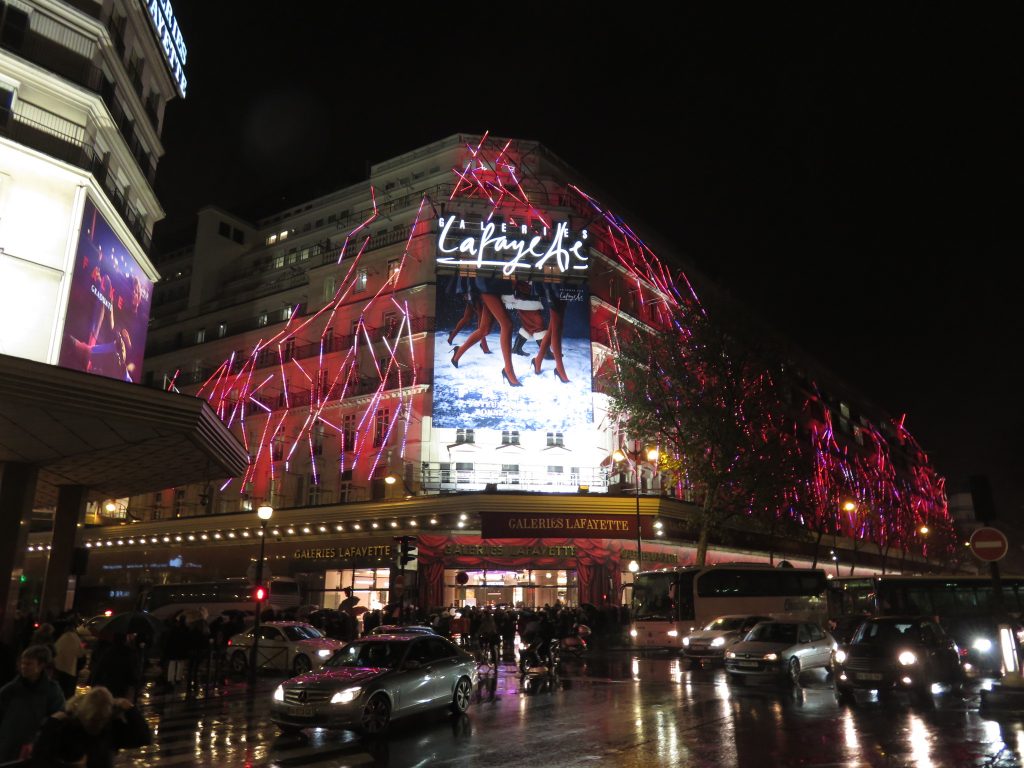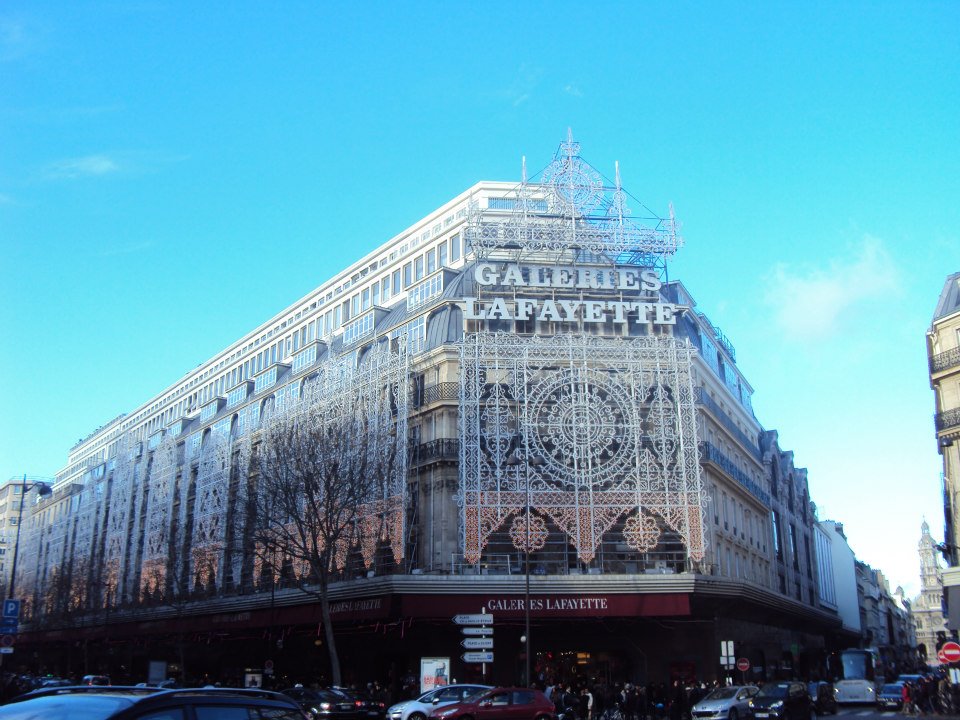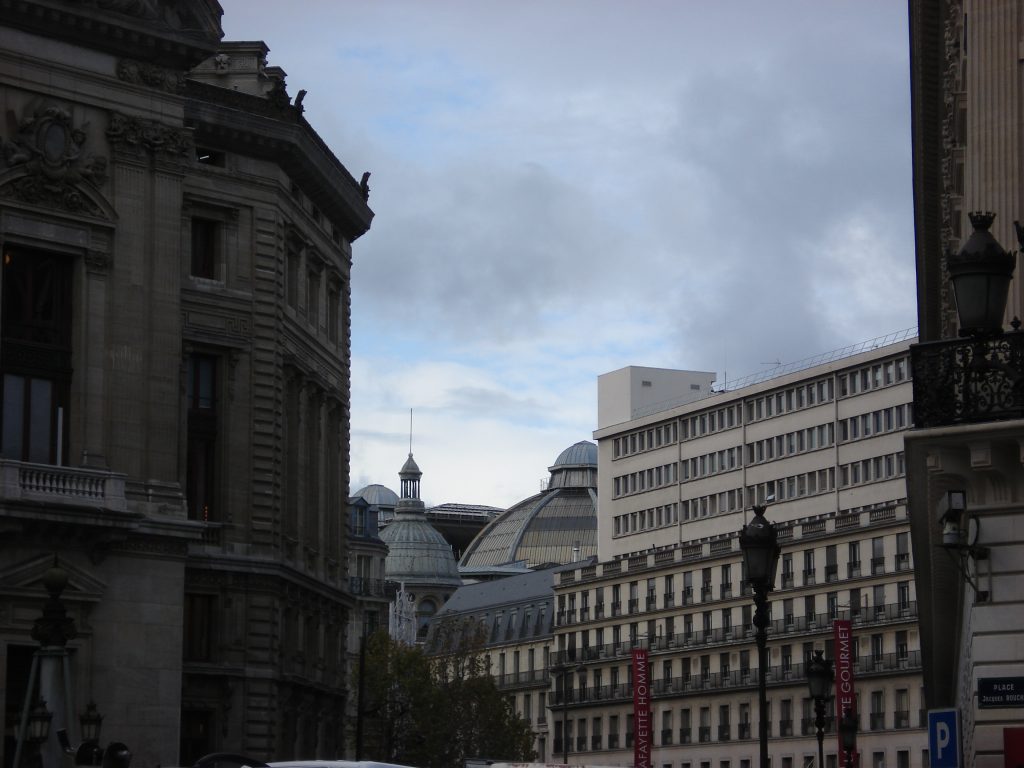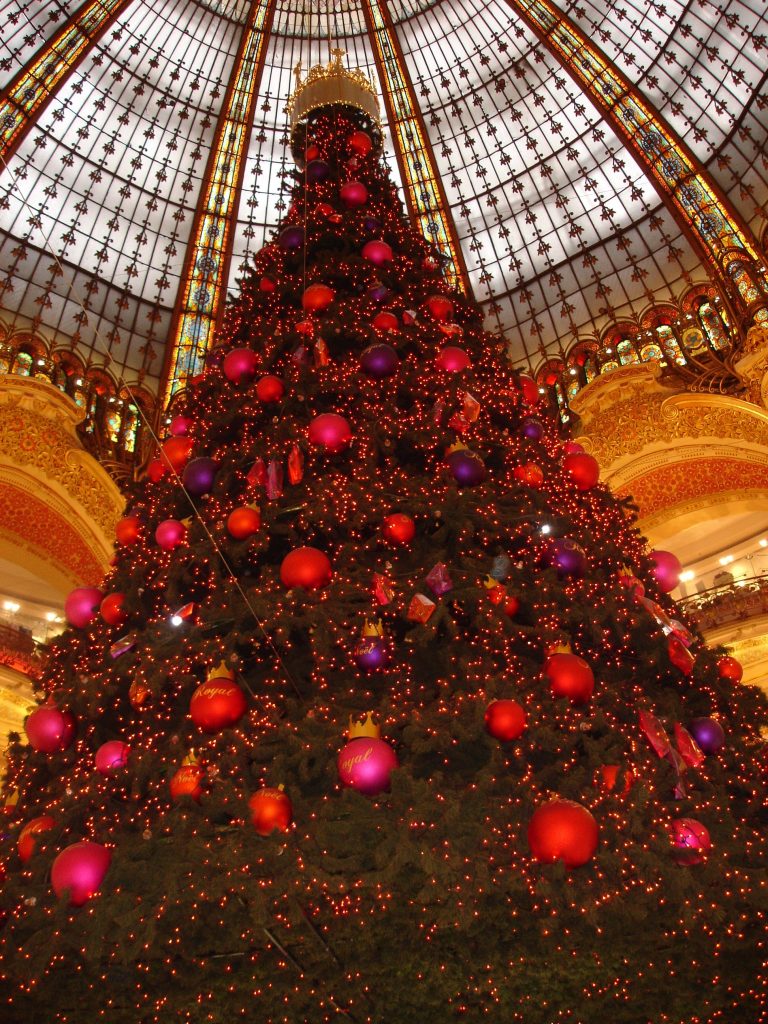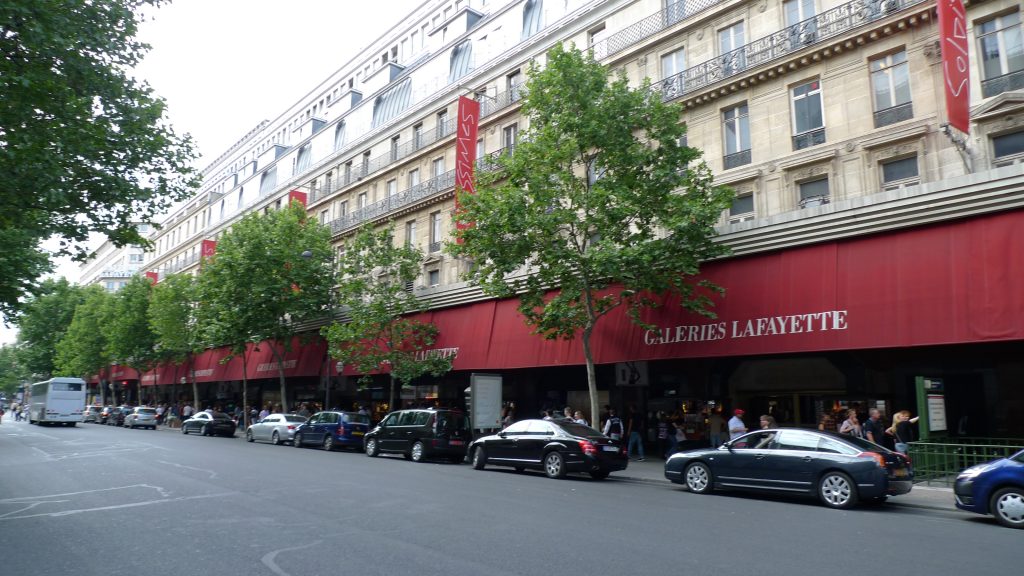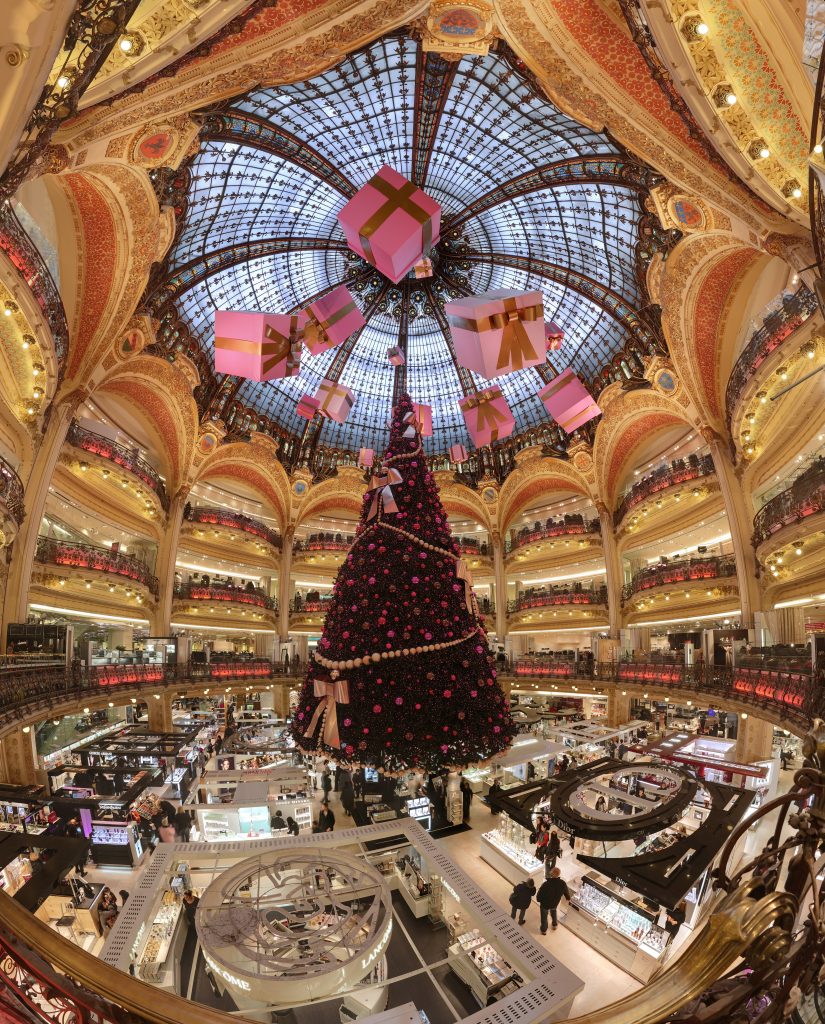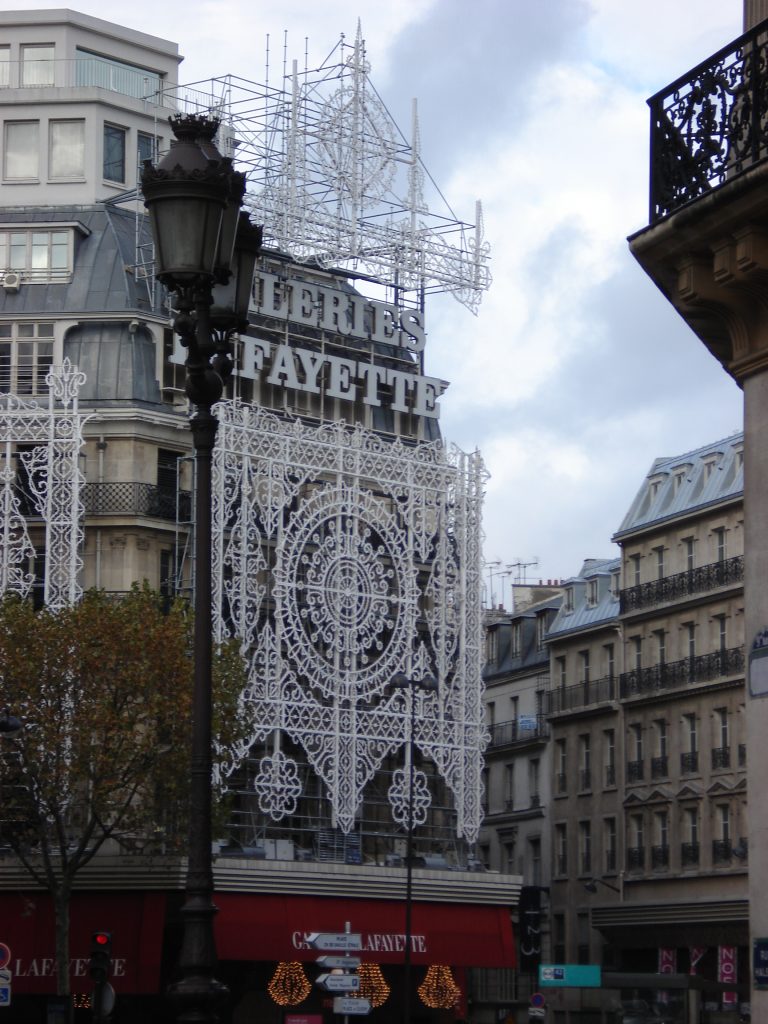Galeries Lafayette

Introduction
Galeries Lafayette is presented as an important point in the development of the history of department stores. In the nineteenth century, a radical change occurred in the way we approach the retail of everyday items, especially fashion. People went from having to go shopping, or so small, where you had to ask the clerk what he wanted for it to be taught it at the counter, to walk through a large surface where the product was exposed. In this way, customers began to have the opportunity to browse, touch products, infatuated with things that really did not need to buy, etc. Galleries Lafayette, however, were not the first to open in the city of Paris. Following the opening of Le Bon Marché in 1852, other commercial establishments of the same type as Les Grands Magasins du Louvre, was inaugurated in 1855, and Les Grands Magasins du Printemps and La Samariteine, both built in 1865.
Since opening to the public, Galeries Lafayette have done nothing but expand your business, grow the company both in its original location, and spread around the world. Currently these galleries are the largest retail space in Europe, receiving thousands of visitors daily.
The beginnings

The history of this department store dates back to 1893. It begins with the acquisition of prime Théophile Bader and Alphonse Kahn, Alsace, a small commercial establishment, a haberdashery, 70 square meters on the corner of Rue La Fayette and Rue Chaussee d’Antin Paris. Your existing provision in corridors through which customers could move freely, originated the name of the store, Galeries Lafayette, “Aux Galeries Lafayette”. The idea of buying this store was an adventure for their owners who proved to have great success thanks to its location near the Opera, the Grands Boulevards and the train station of Saint-Lazare, where many people, Parisians and foreigners, They came from its commercial and social buzz.
Such was the success of the company in 1896 the company bought the entire building occupied the number 1 rue La Fayette. Then, in 1903, he bought the numbers 38, 40 and 42 of the Boulevard Haussmann and the street number 15 Chaussee d’Antin. These acquisitions followed the strategy of construction, made with the greatest possible commercial space. So the big purchase of retail space continued great architecture, architecture should be designed to fully support the business needs of the establishment.
In 1907, Théophile Bader commissioned the first project for the architect Boulevard Haussmann Georges Chedanne. However, the new dimension of department stores came in 1912, when the owner of the Galeries Lafayette commissioned a new project with the vision of the apprentice Ferdinand Chanut would lead to the store to be a great space of luxury.
Thus, the flagship of the company was opened in October 1912. The owner dreamed of creating a bazaar of luxury where the goods were so many luxury buyers could not but exclaim in surprise. It was therefore decided to build the great dome, which was a success. Now the sunlight coming through it, illuminating and brightening the items for sale in the great hall.
From the beginning the establishment would be a place for fashion and innovation. Ensuring that the latest trends were available in his shop, Théophile Bader wanted to distinguish themselves from their competitors. For this reason, Mr. Bader devised a brand for its department stores, ensuring the exclusivity of many of the products for sale in its establishment. To be always at the latest trends and the changing tastes of its customers, he puts a strategy in place. The director of the galleries often go to the races and the opera, accompanied by a designer who would take note of the clothing of the people, discreetly drawing in their notebooks the most beautiful models of the most renowned fashion designers. Then the necessary changes would be made to bring the designs into production as soon as possible and have them available at the store.
Thus it democratized fashion. Both bourgeois working people like the middle class rushed to go to the galleries for the latest trends in fashion. On the facade of the building on Lafayette Street he appeared a large sign advertising department stores, saying, Galeries Lafayette, the best products around Paris.
Rounding out the entertainment experience of customers, the company began to organize events on their premises. As an example, in 1919 the Galeries Lafayette became the scene of Jules Védrines landing on its cover. Although the flyer was fined for flying too low in the city, he won everlasting fame as the first rebel aviation history.
Over time the establishment expanded its range of products, including menswear, furniture, toys, linens, and other traditional departments. With the aim of making art accessible to everyone, the galleries also went into the world of applied arts, opening in 1922 the department “La Maîtrise” applied arts workshop under the artistic direction of Maurice Dufrêne. This workshop wanted to offer products for large and small budgets. The products ranging from furniture, fabrics, carpets, wallpaper, ceramics, etc. One of the first employees at the workshop were the twins and designers Jean and Jacques Adnet.
Such was the success of the galleries that even during the recession of 1929 expanded their domains by buying more space on the Boulevard Haussmann. In 1932 the flagship of the company was renovated under the direction of architect Pierre Patout, Art Deco. Also at this time the viewpoints of René Lalique were added.
Galeries Lafayette after the Second World War
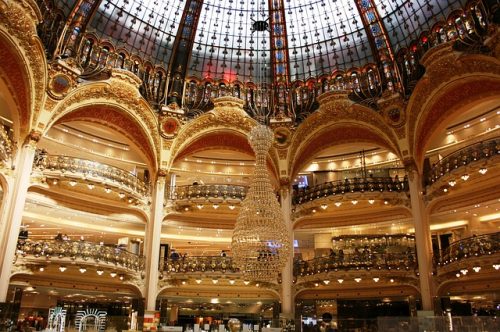
The lowest point in the history of this establishment took place during the occupation, between 1941 and 1944, the city during World War II. The owners had to leave and galleries were in charge of the administration of Vichy until the liberation of the city. After the plight of the early postwar years, the galleries began to regain its glory and success.
After the Second World War, at the height of his career, Edith Piaf sang in the Galeries Lafayette to encourage people to regain normalcy in their lives and in their purchases. A large crowd attended the event and traffic in the area was closed.
To win again its prominent position in the field of department stores, the galleries were renovated and modernized. This modernization also included the scope of the products that the establishment sold. The post of Director of Fashion, who was traveling in search of new products around the world was created in 1952. At this time the premises of the galleries were also the scene of several international exhibitions. The first one took place in May 1953 and was dedicated to “Best Italian production.” Other such as “USA, in 1961, the” Africa “in 1972 to” The USSR “in 1974, or the” Faces of India “in 1995, followed.
The motto of the company’s products for all budgets, led to the “Festival of Design” in 1954, where “good taste at a good price, rather than the tacky at high prices” were awarded.
In the sixties the Galeries Lafayette offered spaces to emerging designers of ready-to-wear for launching their collections each season. The first brand that took this opportunity was Laura, that later would be called Sonia Rykiel. Other brands that also used these spaces were: Daniel Hechter, Pierre Cardin, Cacharel, Yves Sain Laurent and Dorothée Bis.
In 1969 the company opened another establishment in the Mogador street where all products offered, from clothes to music or pharmaceuticals. From here, with Lafayette 2 and the opening of food and drink Lafayette in 1990, the brand Galeries Lafayette became the first urban center linking shopping, services and underground parquin, everything about a lifestyle in one place.
In 1974 the grand staircase was restored and refurbished downstairs for large stores. In 1980 the center created its own “Fashion Festival”. Until 1999 the great fashion designs were exhibited in galleries and top designers were invited to show their creations on the premises: Karl Lagerfeld, Robert Wilson, Jerome Savary, Marie-Claude Pietragalla, David LaChapelle, etc. In 1984 the company opened its design department with the exhibition “France has talent” which were Azzedine Alaïa, Jean-Paul Gaultier, Thierry Mugler and Jean-Charles de Castelbajac.
Today the Galeries Lafayette
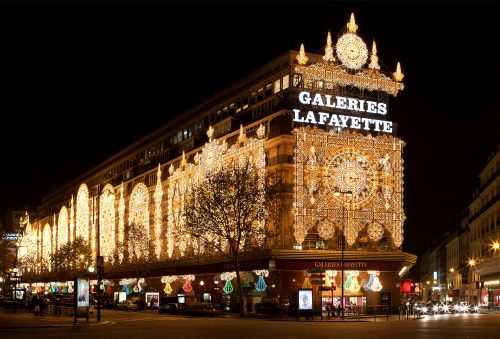
In 2001 the company hired Jean-Paul Goude to take charge of public relations of the establishment. The first campaign of this, “The Adventures of Laetitia Casta in the land of the Galeries Lafayette”, marked the beginning of a very fruitful relationship. Photographer always made visible in their campaigns the spirit of the company and was not satisfied with mediocre quality ads.
In 2004 Marks and Spencer store on Boulevard Haussmann was transformed into the Maison Lafayette, following the purchase by Lafayette all of France Marks and Spencer stores in 2001.
Throughout its history the Galeries Lafayette have been in close relationship with the world of fashion and design, bringing them to the public and support the artists that the time has recognized its value. Following this vision, the company decided to open in 2001, the Galerie des Galeries, an art gallery free entrance on the first floor of the main hotel. In her cross-fertilization in the world of art, design and fashion shows.
The company also supports the art world through collaborations with institutions such as the Centre Pompidou, the Museum of Modern Art and the Villa Noailles in Hyères.
Galeries Lafayette has been passed from father to son for five generations, becoming a family business that has stood the test of time, war and financial crisis through its capacity for innovation and commitment to excellence. In 2008 the company created a department of historical heritage in order to preserve its rich history and ensure link the past with the future of the company. The file is about the architecture department of the establishment and its history. This is available by appointment.
The first stores outside Paris which opened the company were placed in small towns of France as Nice and Nantes. The company has also opened galleries in other cities:
- Berlin, designed by Jean Nouvel establishment, built between 1991 and 1995. Open to the public in 1996.
- NY. It was at the Trump Tower in Manhattan. He failed and was closed in 1994, three years after opening.
- Casablanca, setting designed by Davide Padoa of Design International, in 2008. Opened to the public in 2010.
- Dubai, opened in 2009.
- Jakarta, opened in 2013.
- Beijing, opened in 2014.
1912-2012: In 2012 the centenary of the Galeries Lafayette with an exhibition called held. Chronicles of a creative journey, commissioned by the architect Rem Koolhaas and his OMA studio, along with other partners such as the artist Yann Kersalé and Djuric Tardio Architects – Architects, responsible for the installation called Chrysalis.
Galleries Lafayette is a is the main tourist attractions of Paris, behind, of course, the Eiffel Tower, and has delighted many celebrities, to name a few: the Duchess of Windsor’s wife Aga Khan, Mrs. Khrushchev, Bill Clinton and Prince Charles.
Location
Galeries Lafayette is located in the ninth district of the city of Paris, France. Currently they are occupying an entire block while the original building of the commercial property is located on the corner of the street Chaussee d’Antin and Boulevard Haussmann. The nearest to the galleries metro station is Chaussee d’Antin – La Fayette. Other nearby stations are Havre-Caumartin Opéra, Havre – Cumartin or Richelieu – Drouot.
Concept
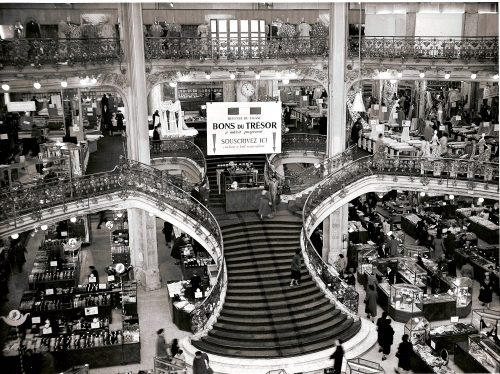
The architecture of these department stores is influenced by the concept of bazaar of cultures of the Middle East. In these spaces the goods are exposed so that they are available to buyers, allowing them to approach them and contemplate freely. This conception of what a retail space has to be greatly influenced the Western world in the nineteenth century, gradually resulting in changing vision of what stores should be. They went from small establishments to be department stores, now common day worldwide.
The owner himself Galeries Lafayette dreamed of creating a place that was like a bazaar of luxury, which surprised all who entered it and wowed them with the splendor of the environment and of the products displayed on it. So it was very important to have architects capable of providing the magnificence of the building, and create that atmosphere, almost palace, where new sales had to be developed. And there is nothing more that a large palatial lobby under a dome to shed sunlight inside the building and in which space has a majestic staircase, inspired, nothing more and nothing less, than on the stairs of the Opera Garnier, preferred place of the wealthy Paris.
Spaces
The most emblematic Galeries Lafayette is the great hall located down the glass dome. The magnificence of it made from the beginning became the symbol of the paintings. The head of design in neo-Byzantine style of the tinted windows of the dome was the glassmaker Jacques Gruber.
Ferdinand Chanut was who commissioned artists of the Ecole de Nancy decor in Art Nouveau building interiors. Louis Majorelle], who had previously made orders as the restaurant _of_Lourdes_,_was_responsible_for_the_design_of_the_grand_staircase_of_the_Lafayette_stores._For_this_project_was_inspired_by_the_grand_staircase_of_the_Opera_Garnier_Paris. In addition he was also in charge of the iron work on the railings of the three lines of the balconies overlooking the great hall.
Department stores not only innovated in terms of its architectural splendor. They also included a tea room, a reading room and a smoking room, apart from the 96 commercial departments. The more department stores emerged in the cities, plus the fact of buying a hobby became, so here too the visitors were offered a panoramic view of the city of Paris from the terrace of the building.
At Christmas 1951 the largest escalator in Europe was included in the mall. In addition, between 1957 and 1959, the space of the gallery was increased with the construction of two more floors on top of the building.
Another interesting point was developing department stores at street level. Galeries Lafayette is known for the careful design of their windows, they still try to entice the public to adentrase in the building and buy all sorts of items.
Structure and Materials
Galeries Lafayette were the first to be built entirely in concrete, a material not yet used at the time. The use of this material allowed the architect to create curves and innovative ways by then. The details of the building are made of iron, concrete and glass. The dome, the top of which is 43 meters above the ground, is built of steel and glass. Divided into ten zones, including typical blue colors of the French cathedrals. Furthermore it is crowned by a lantern also made of steel.
Video



